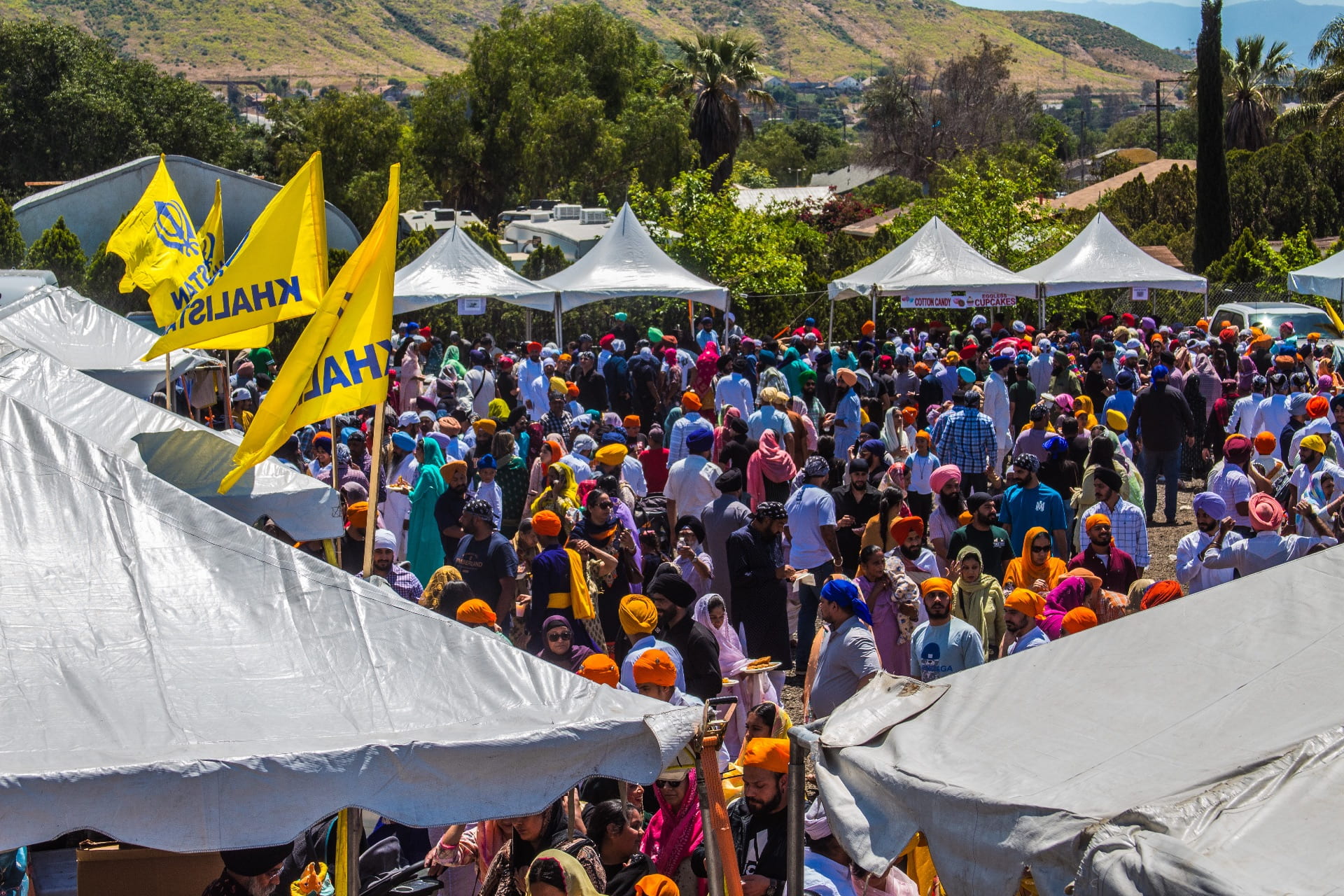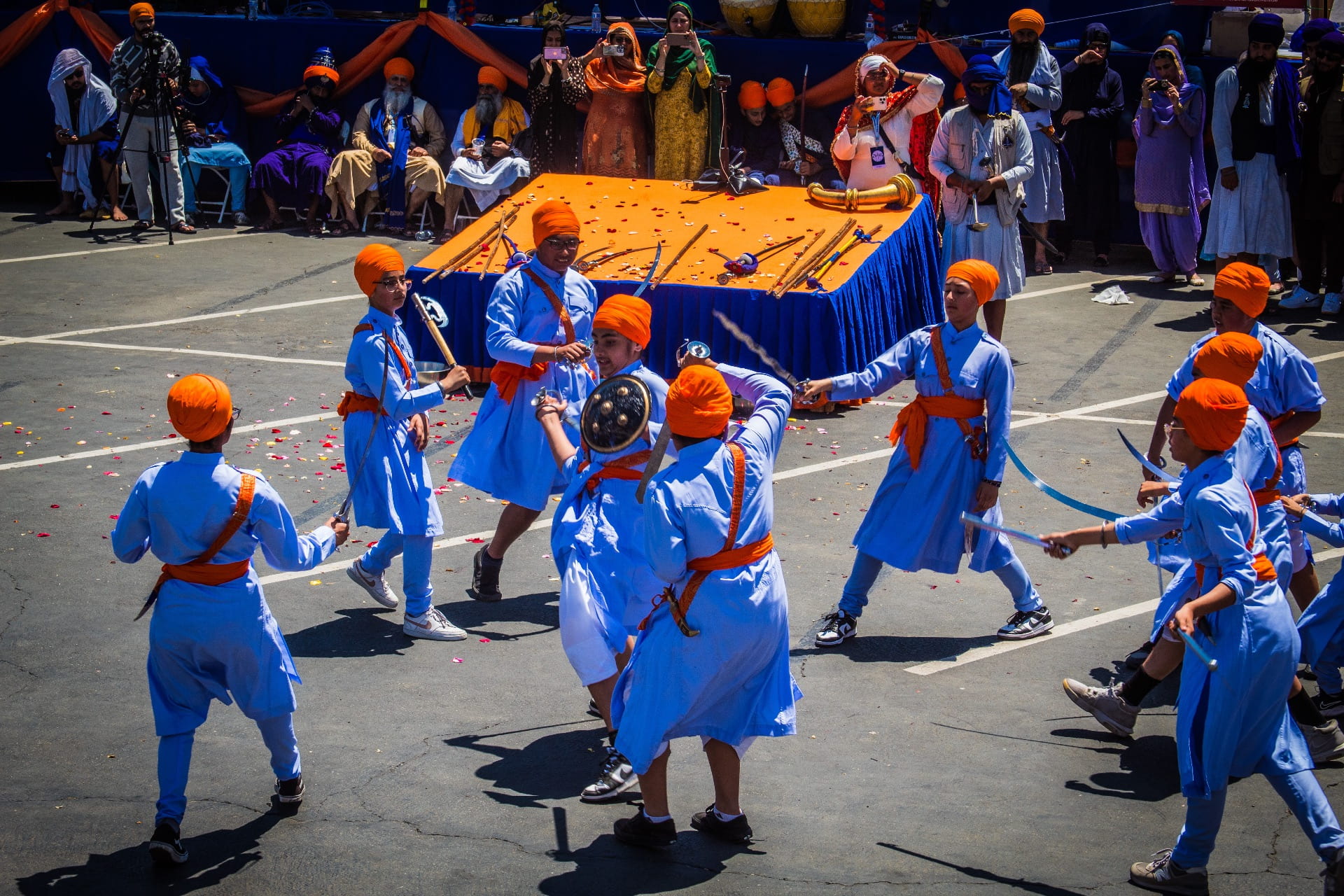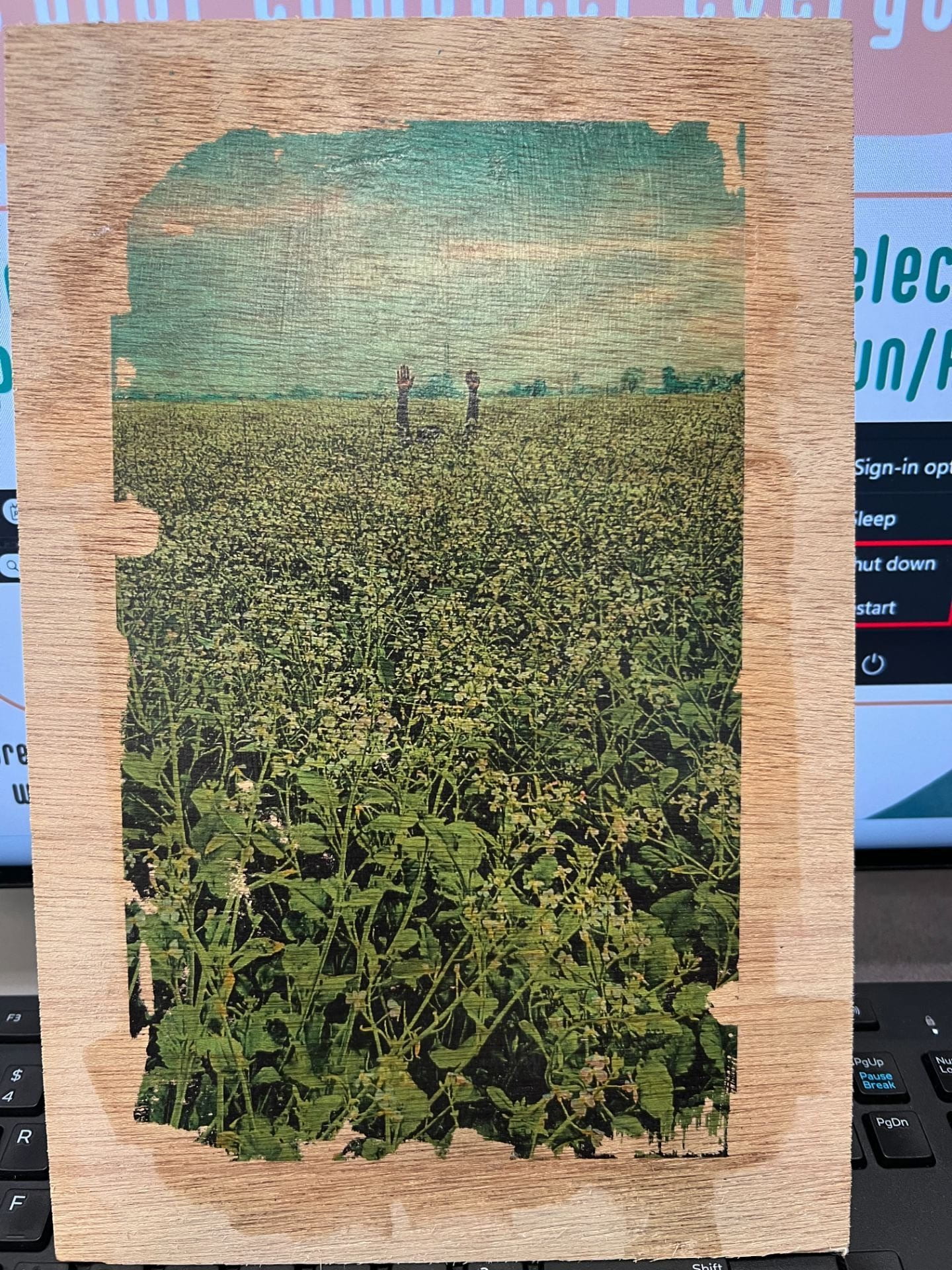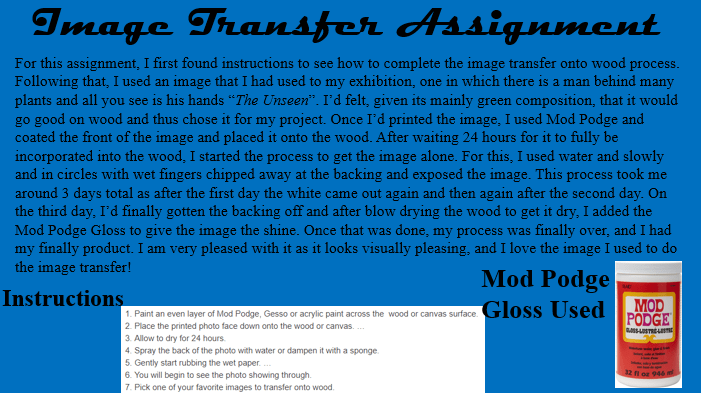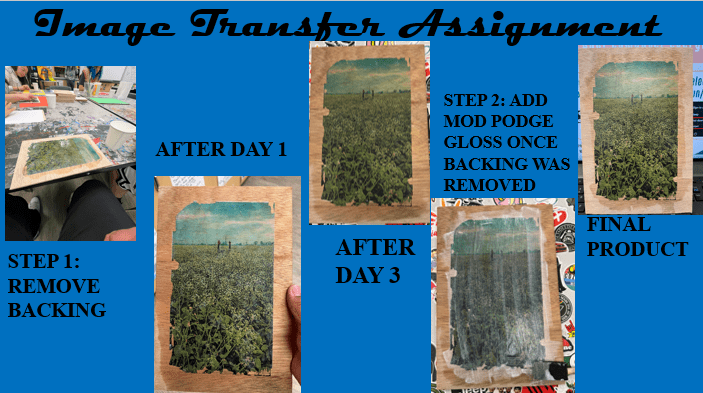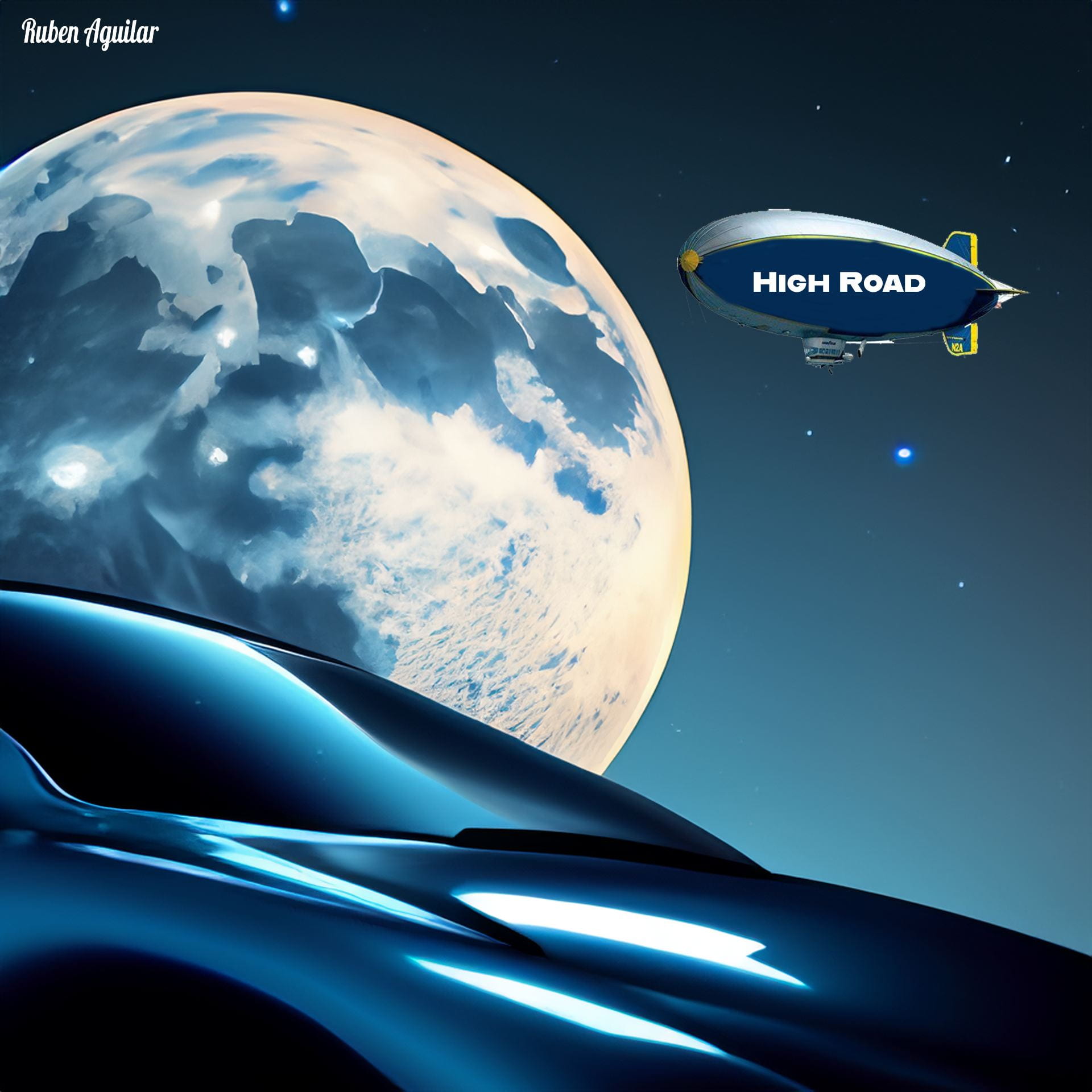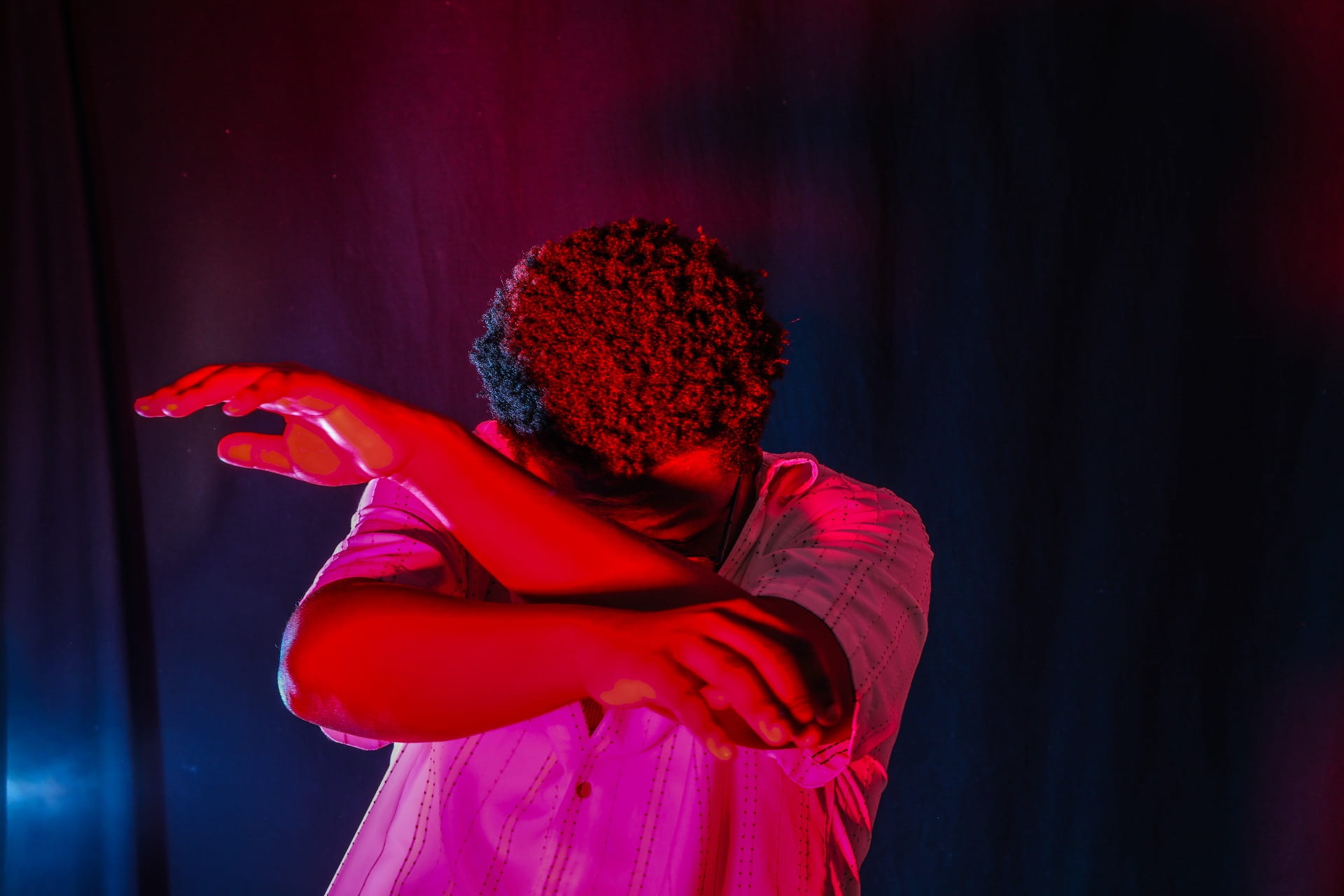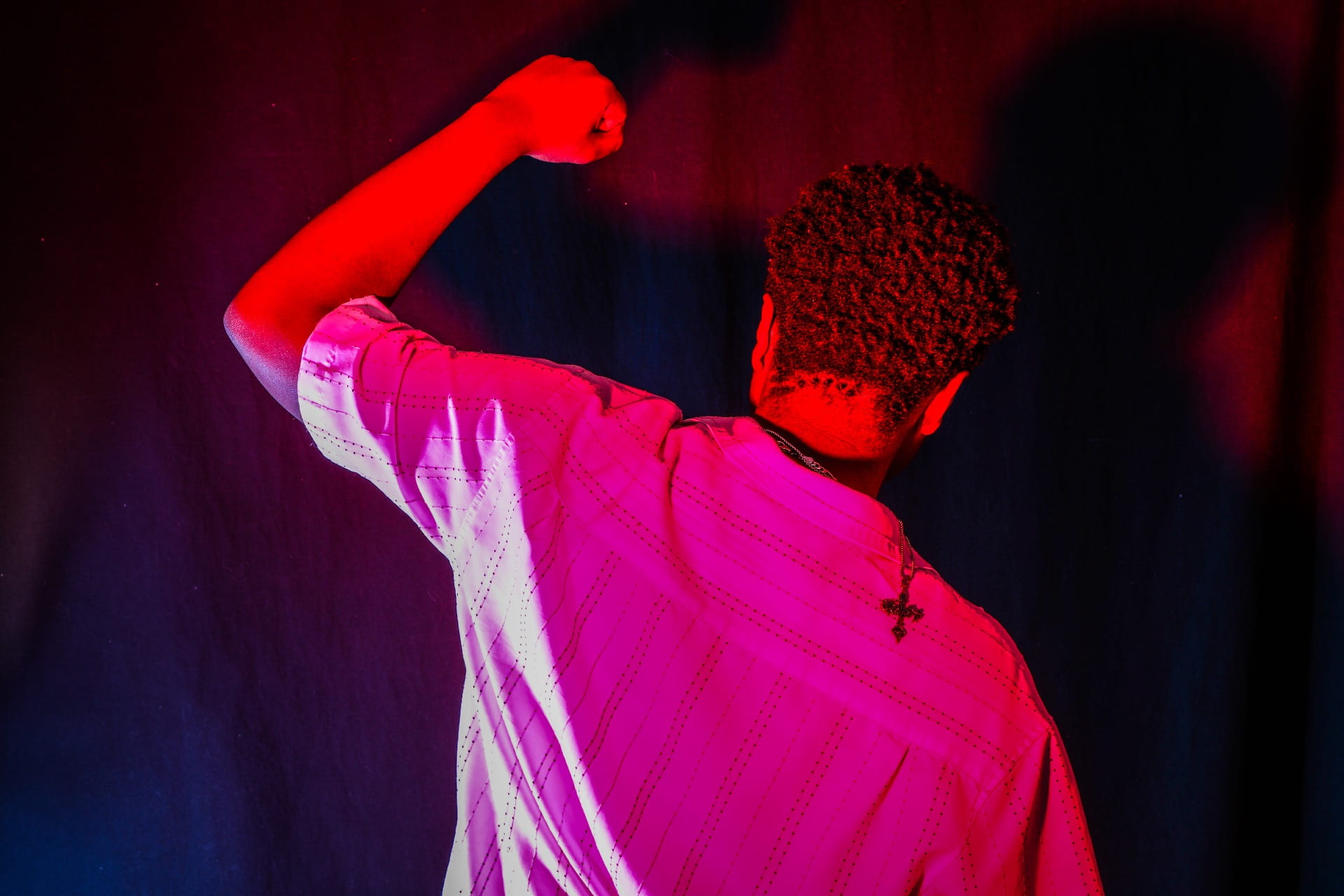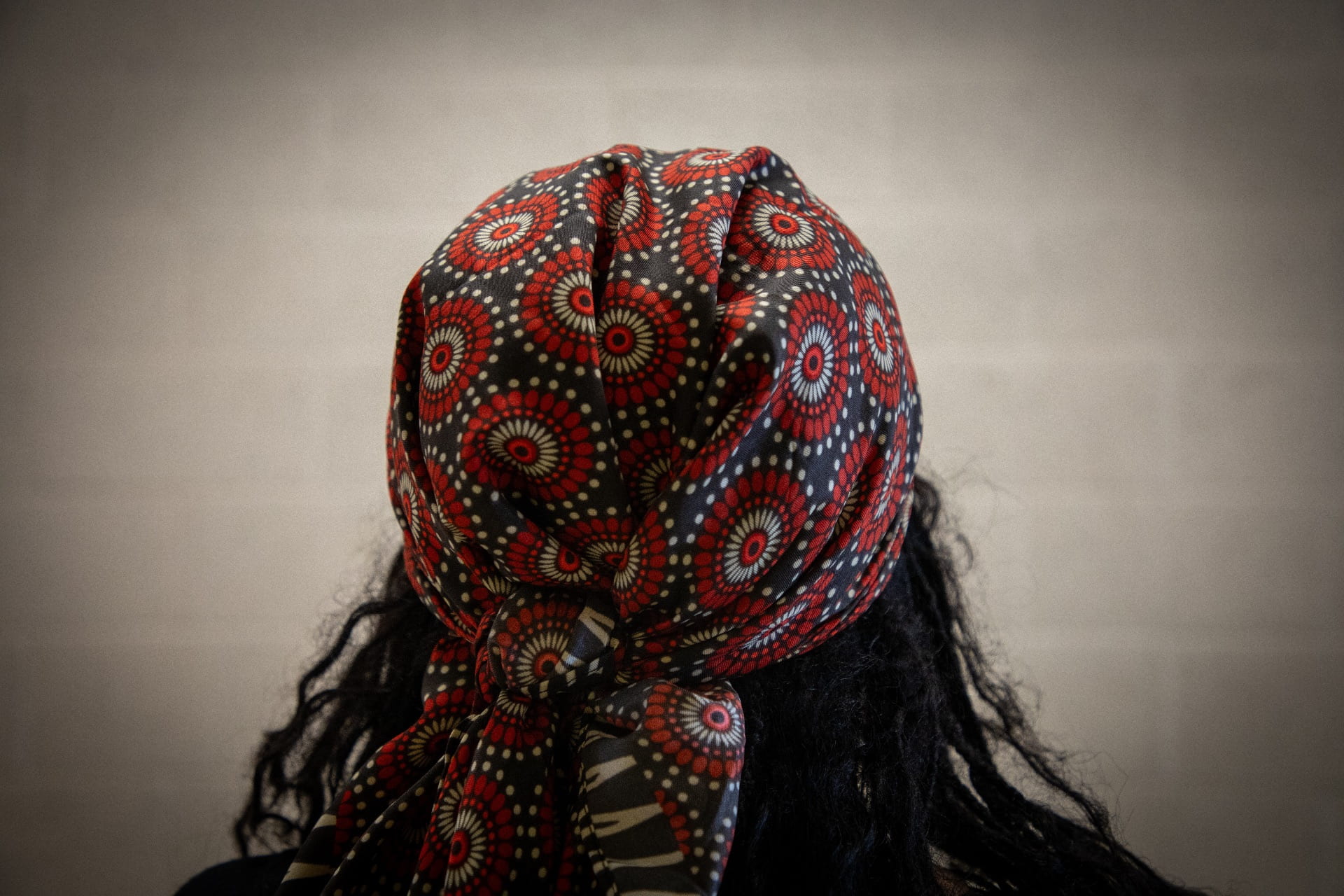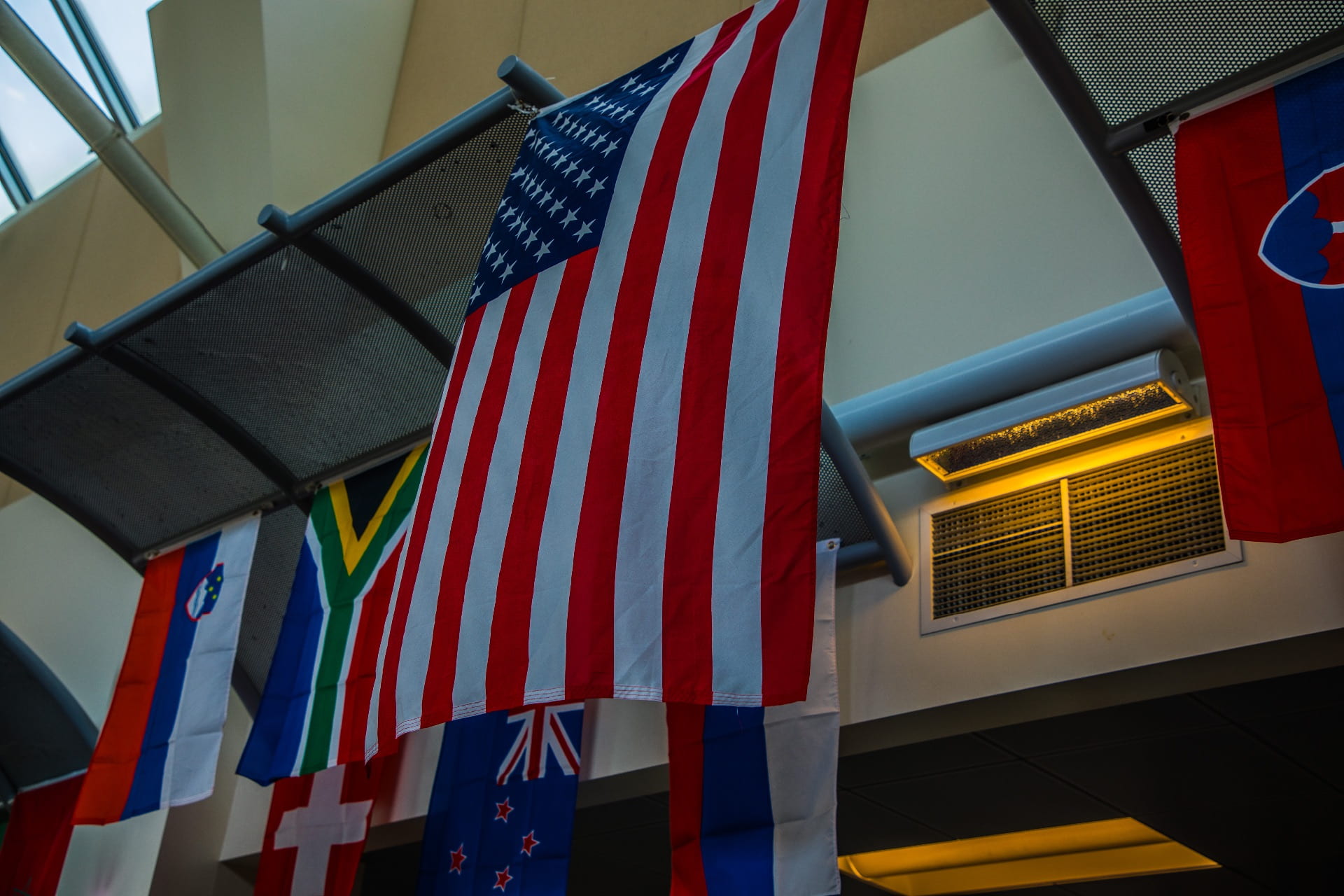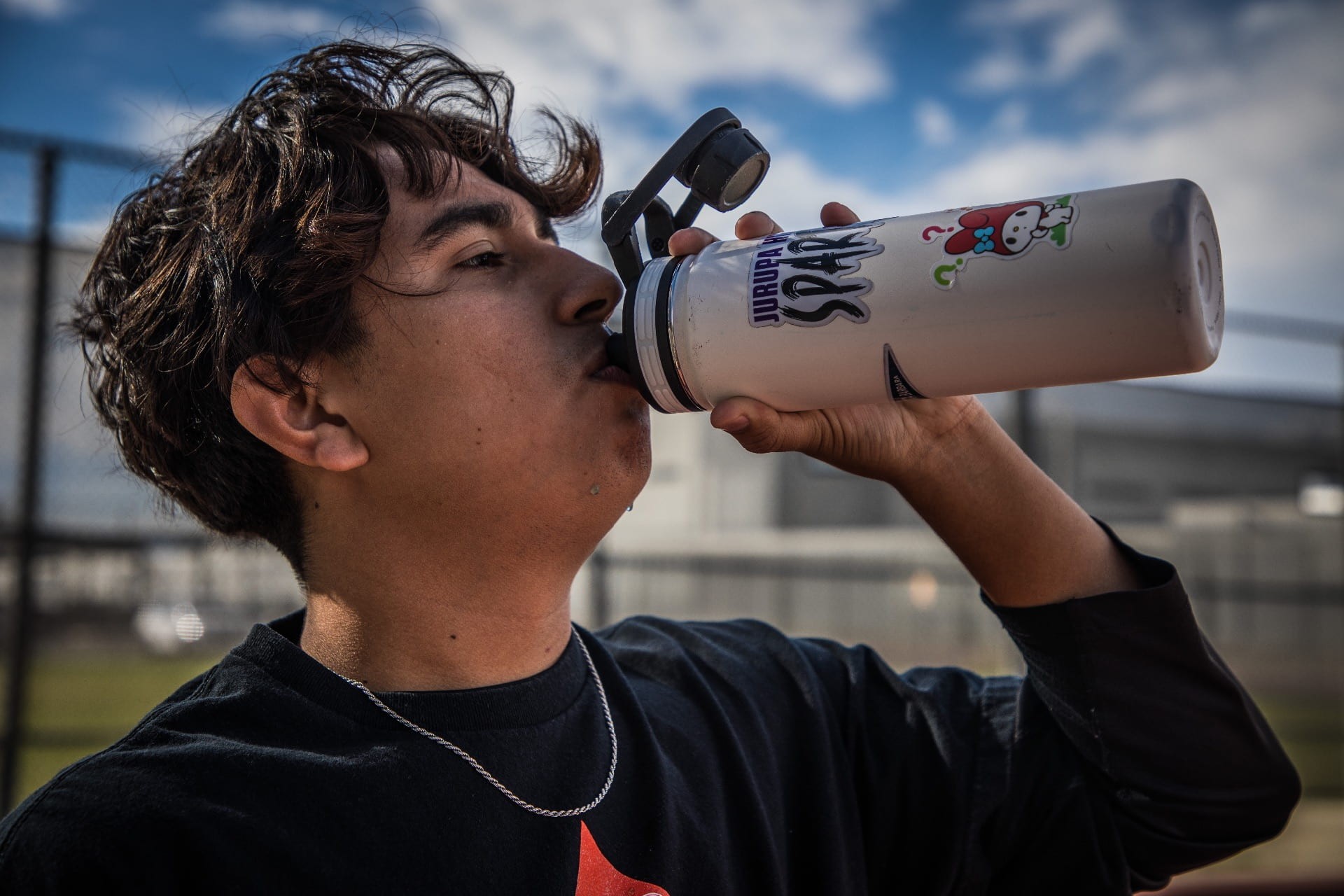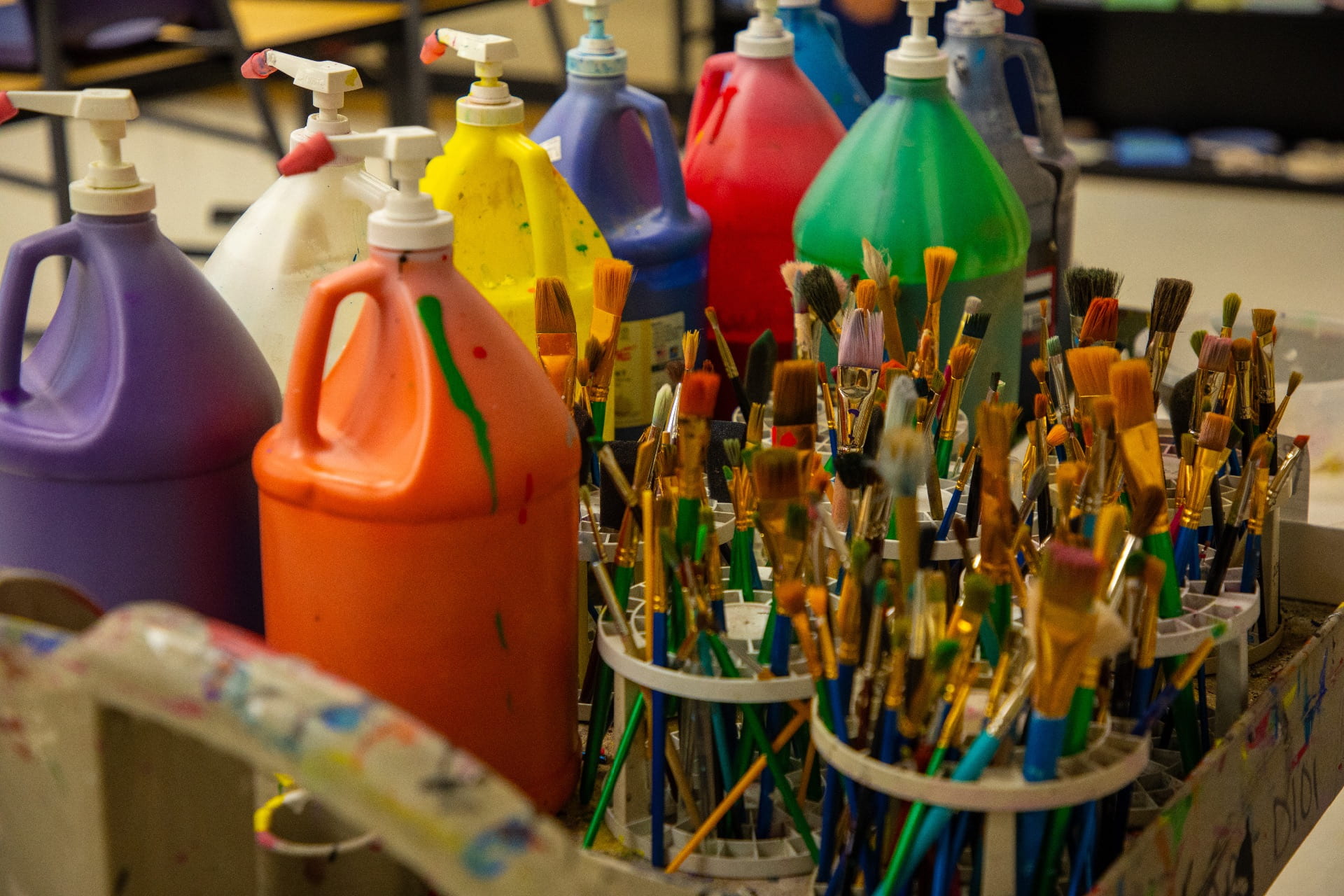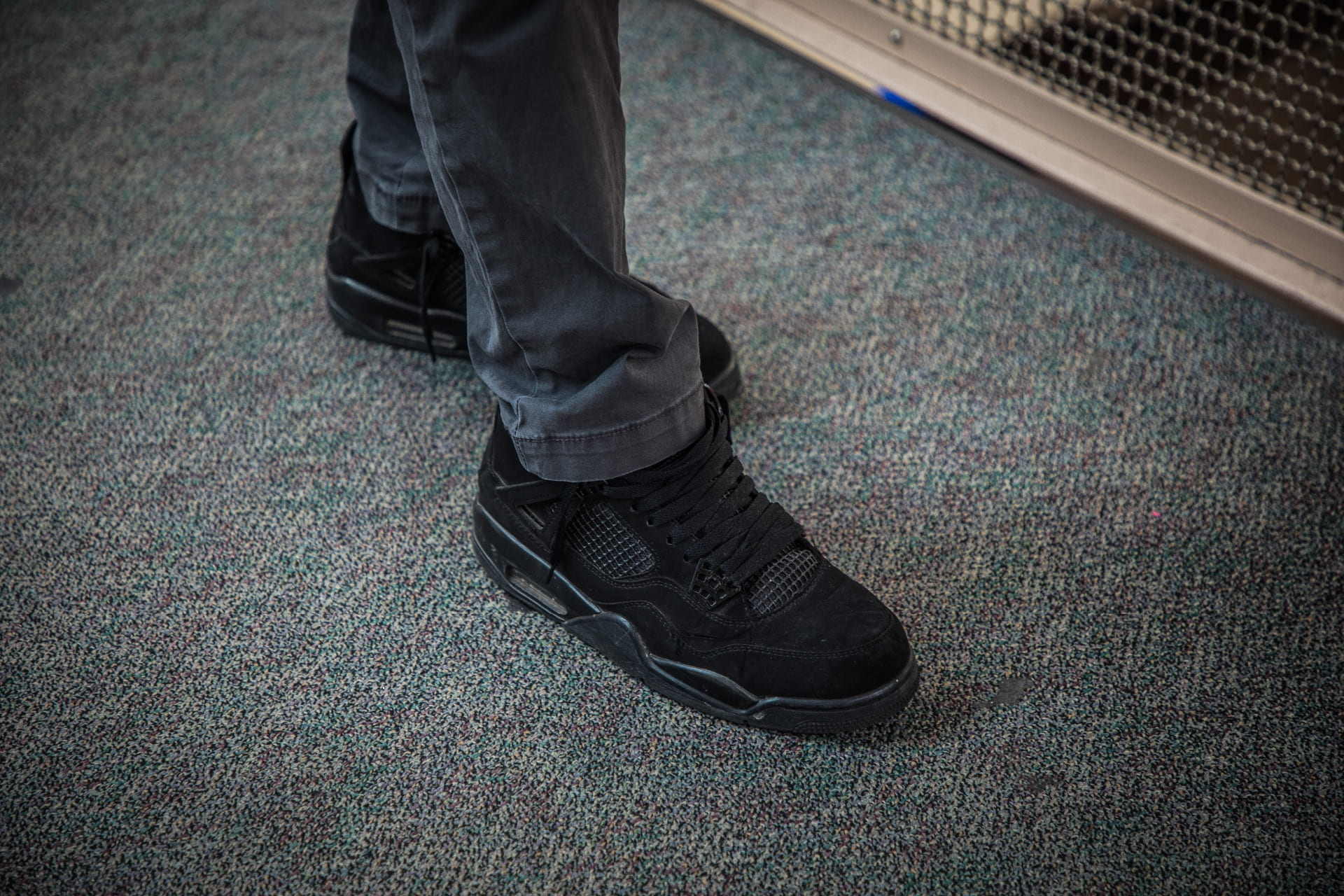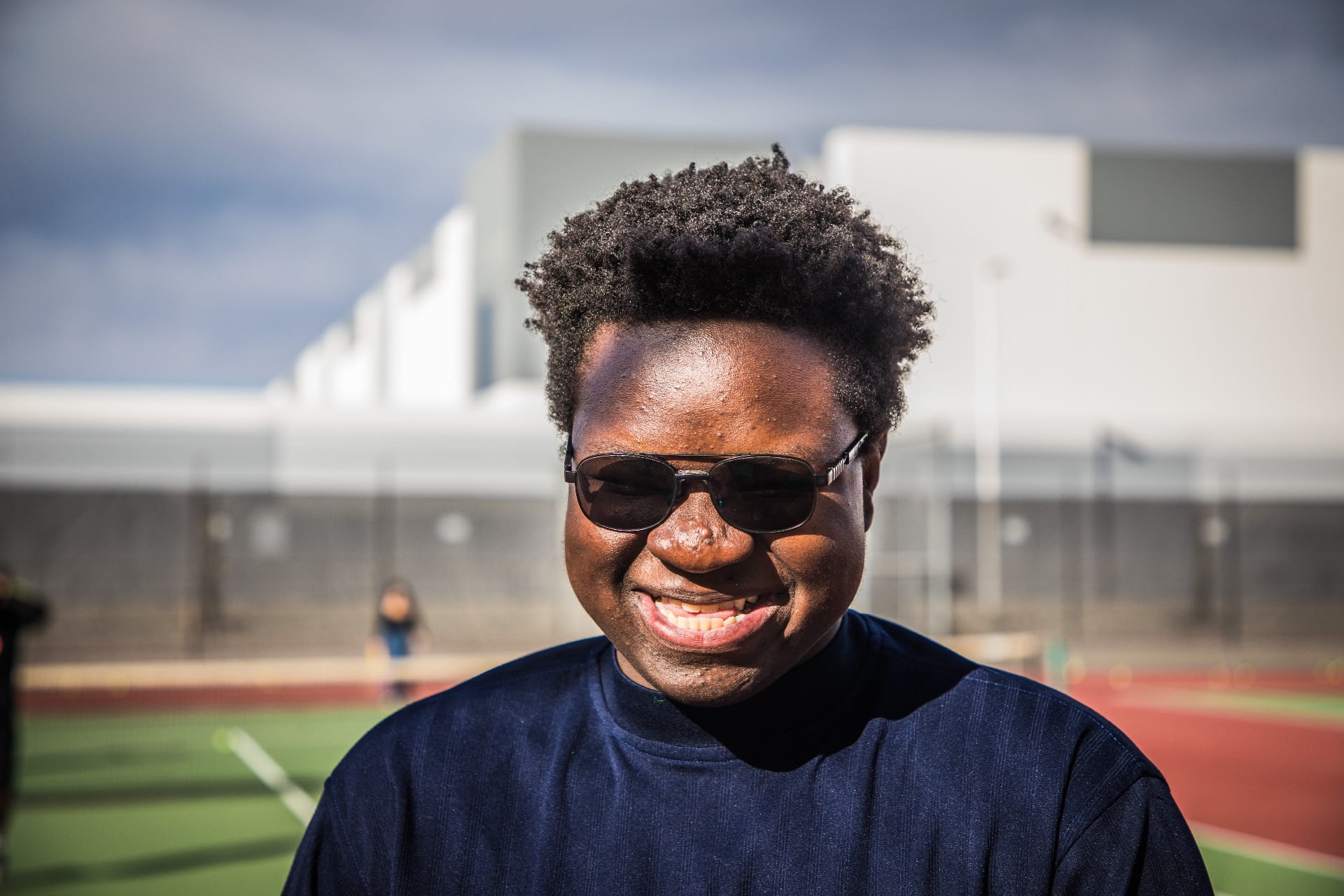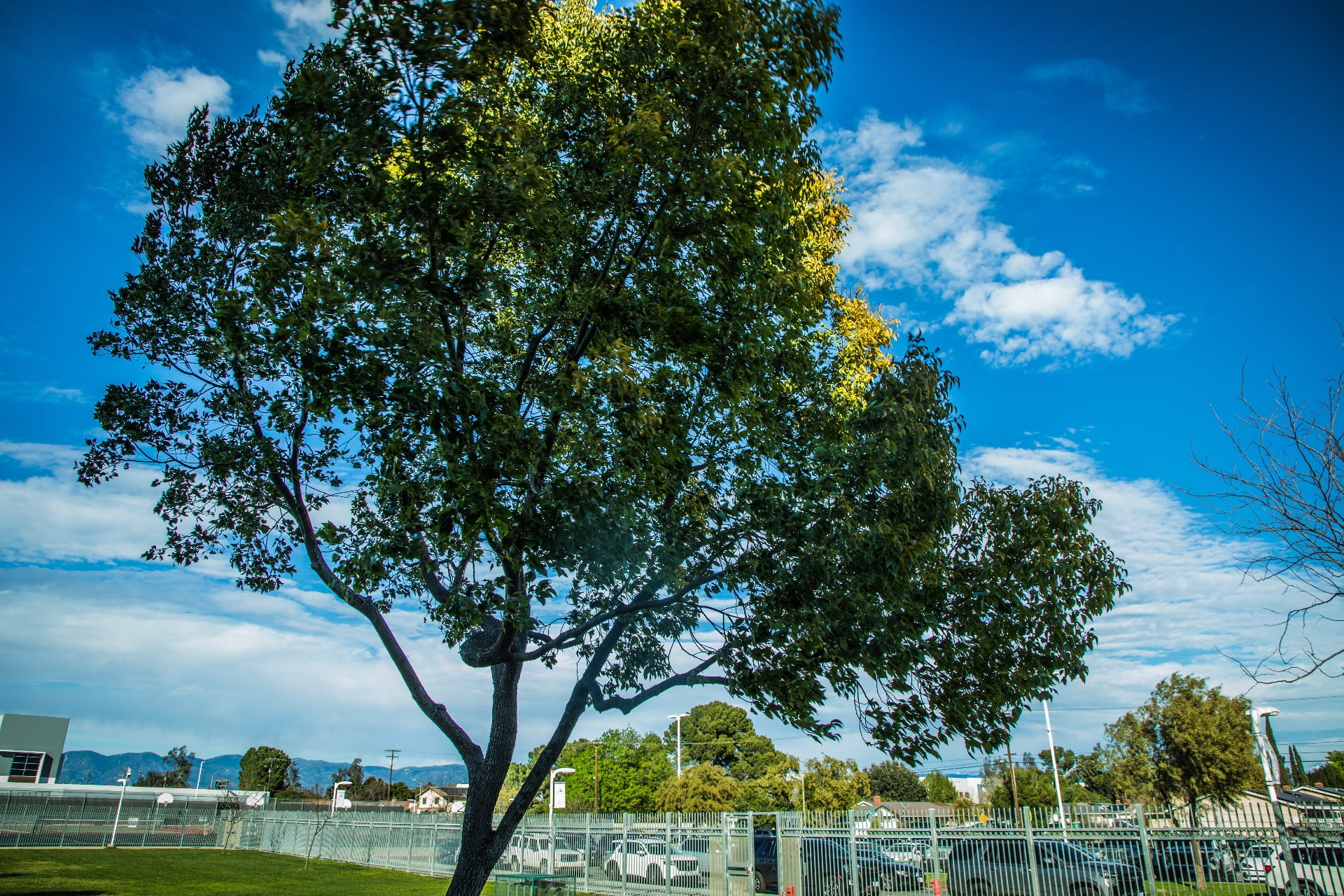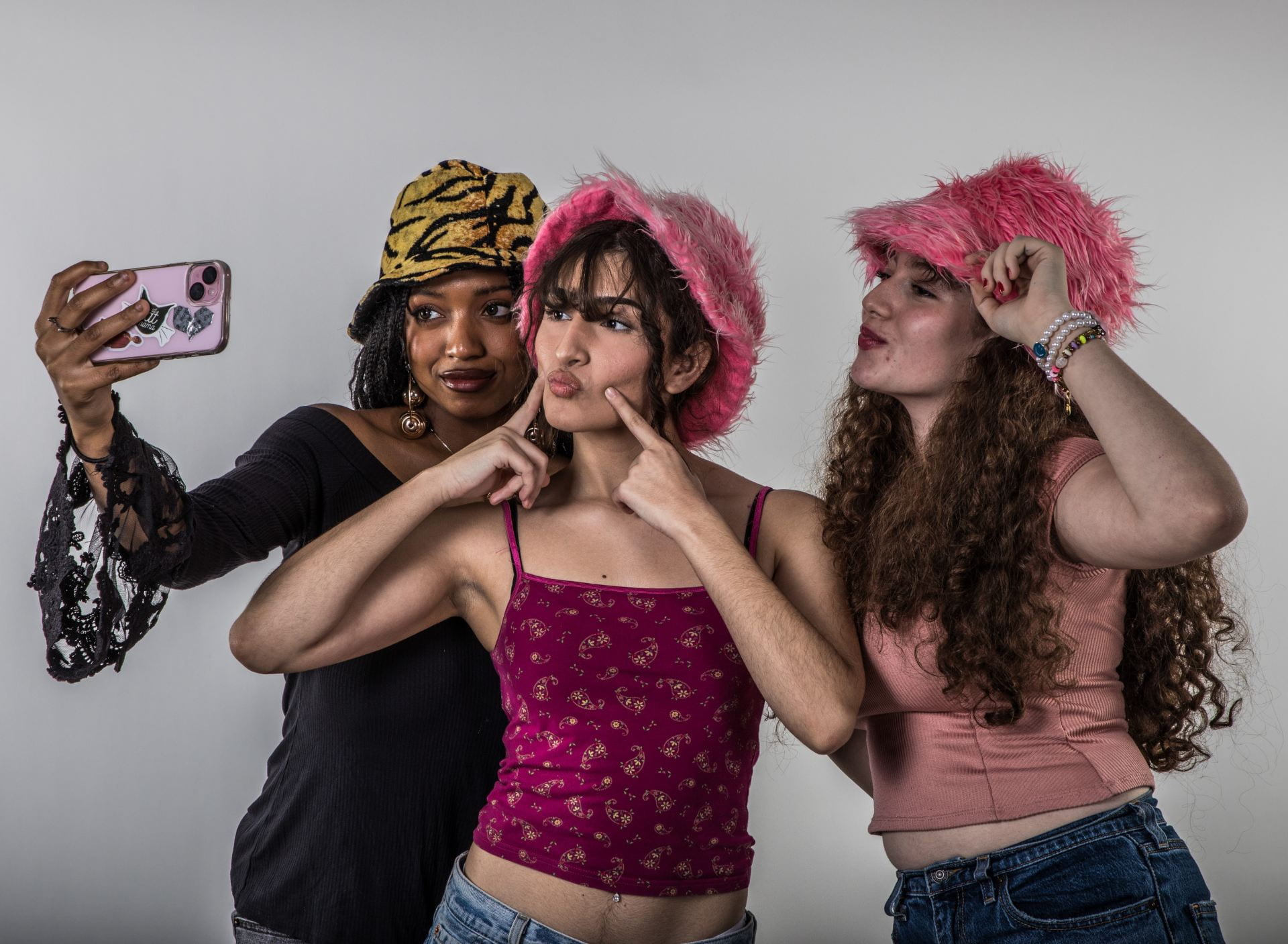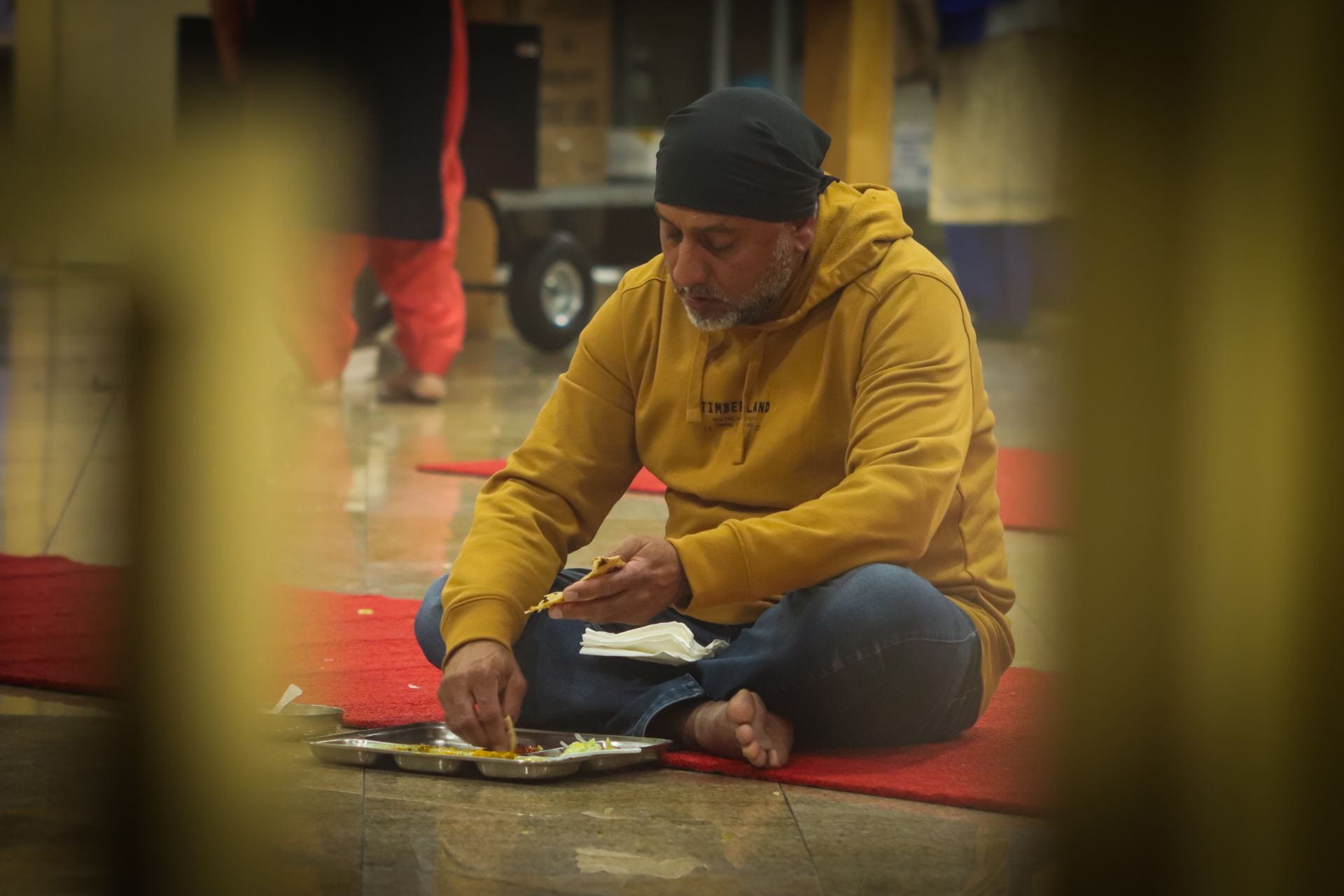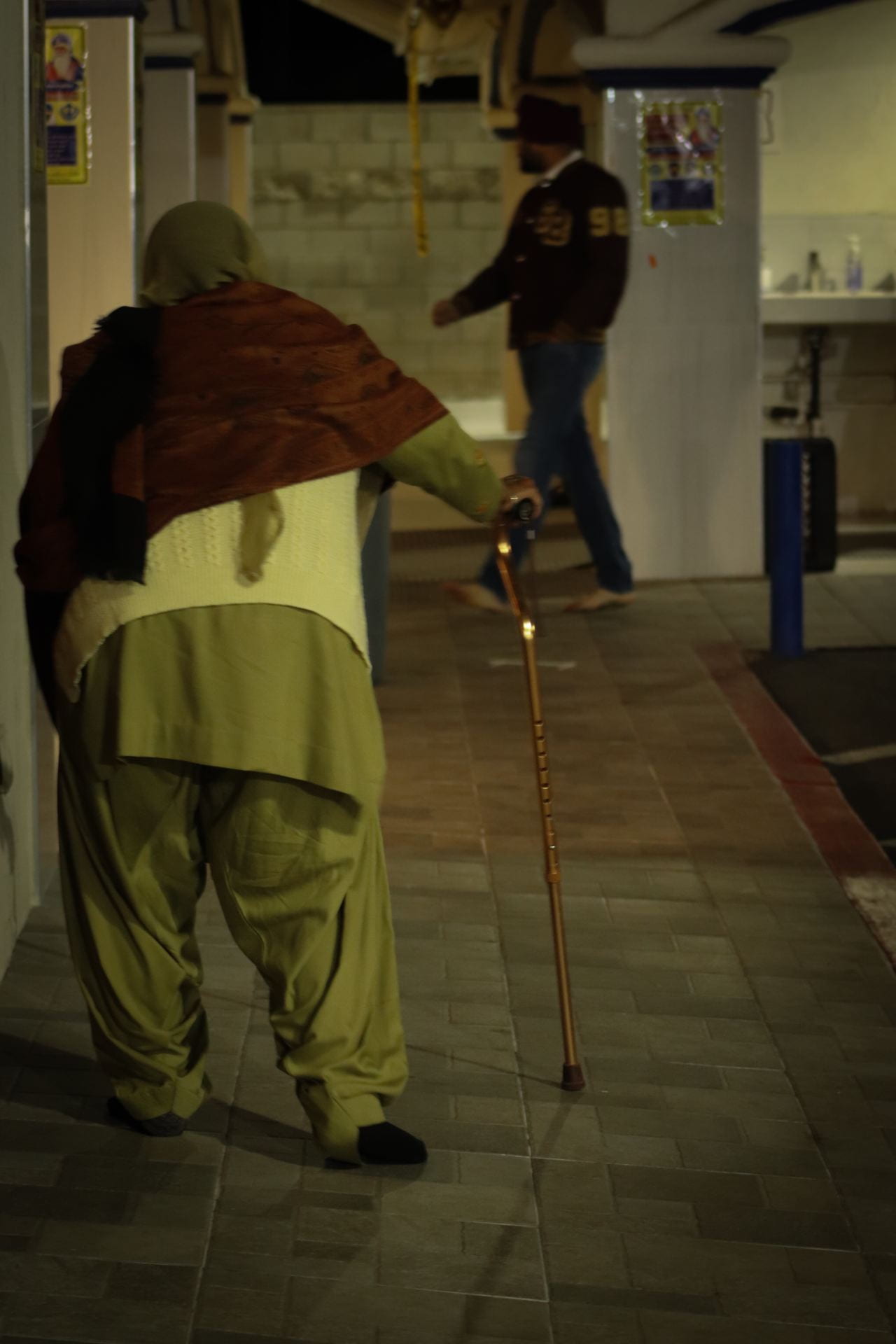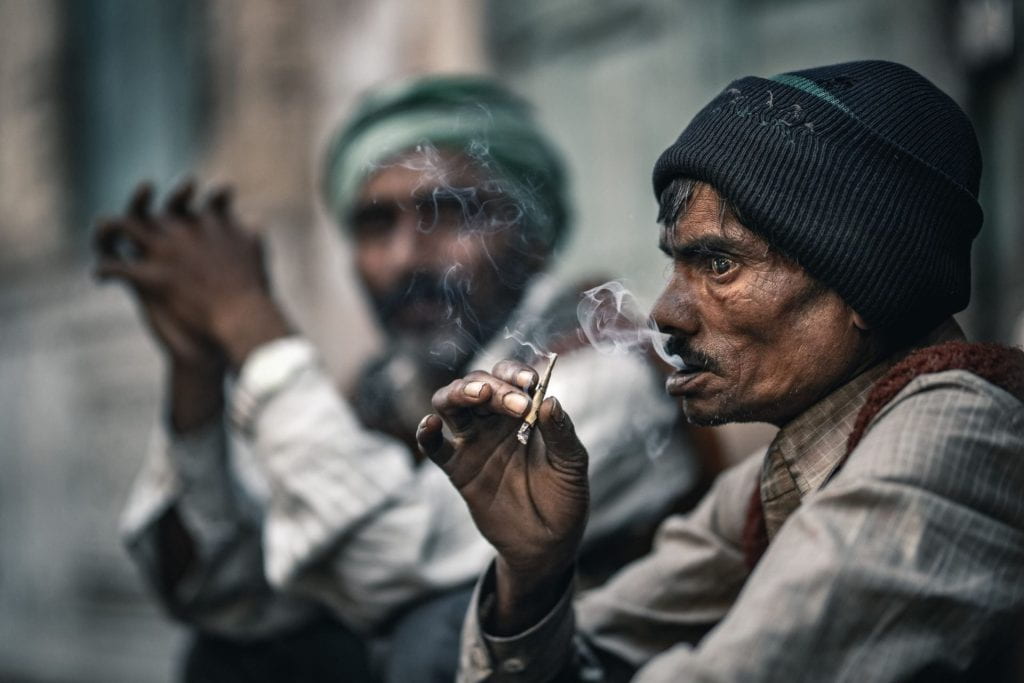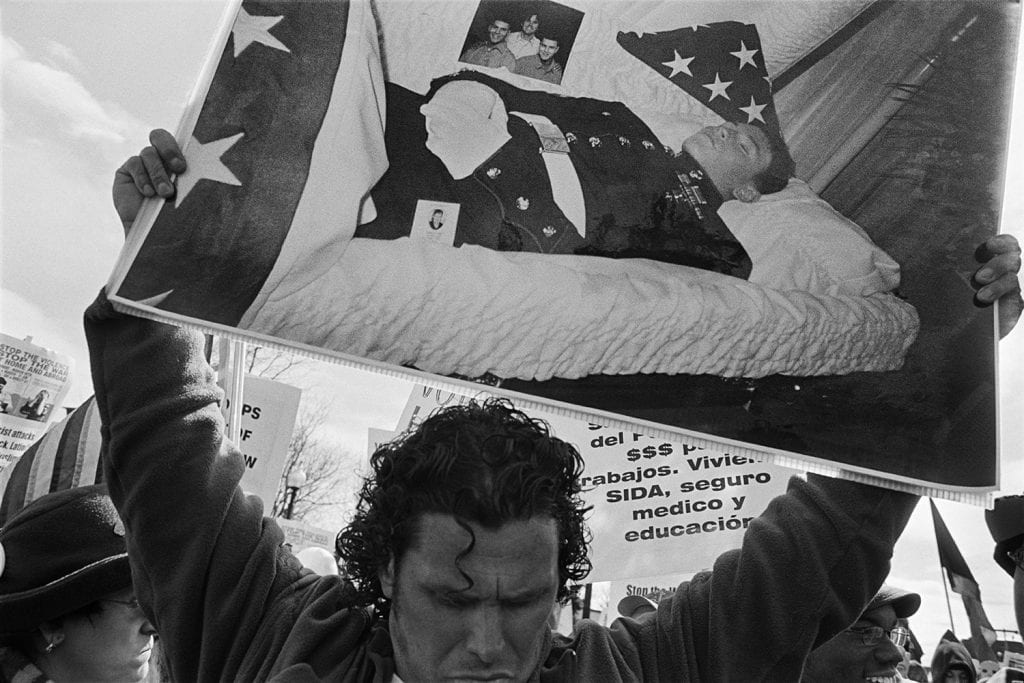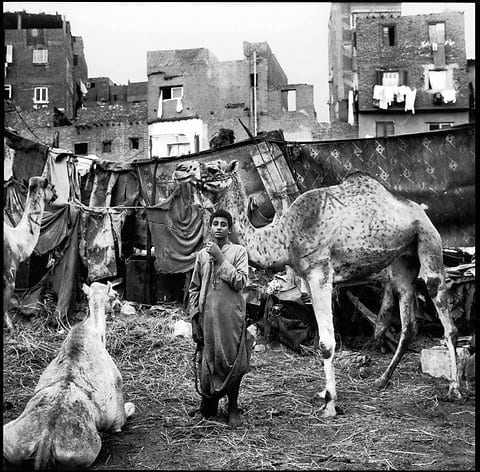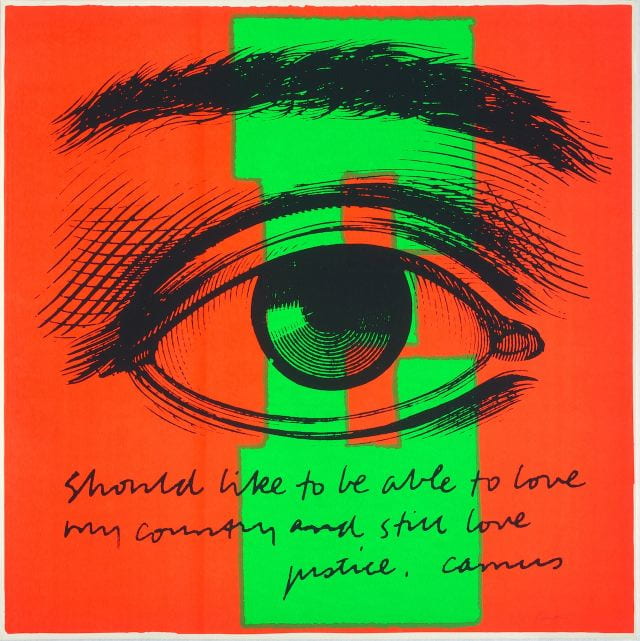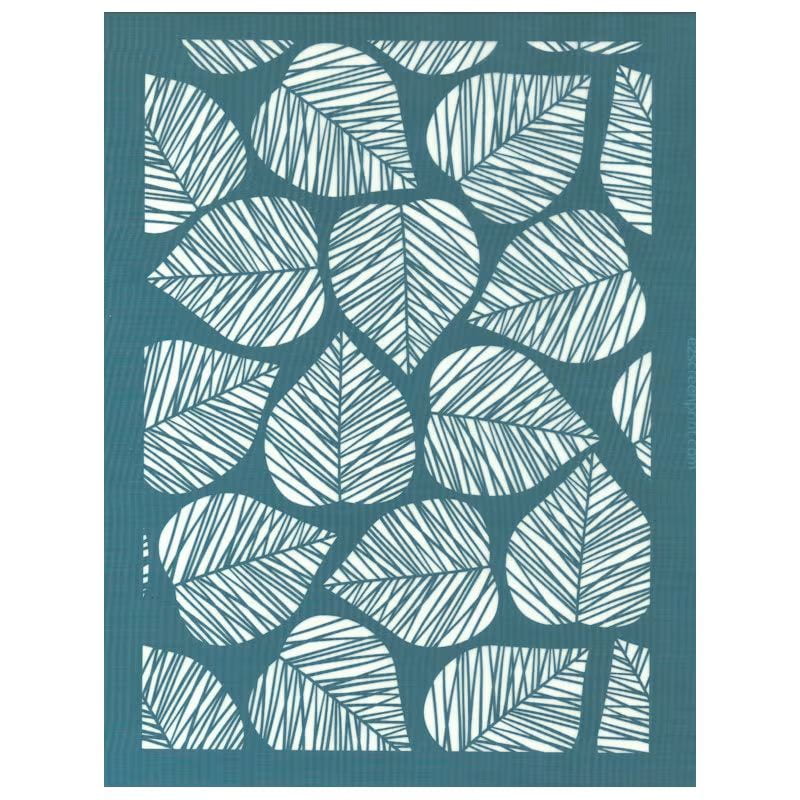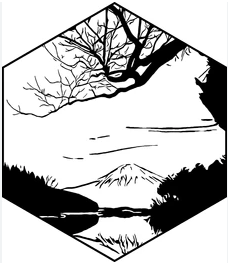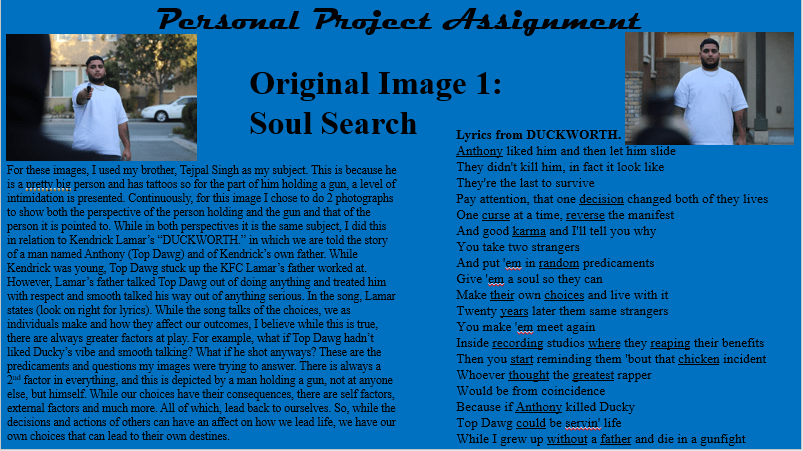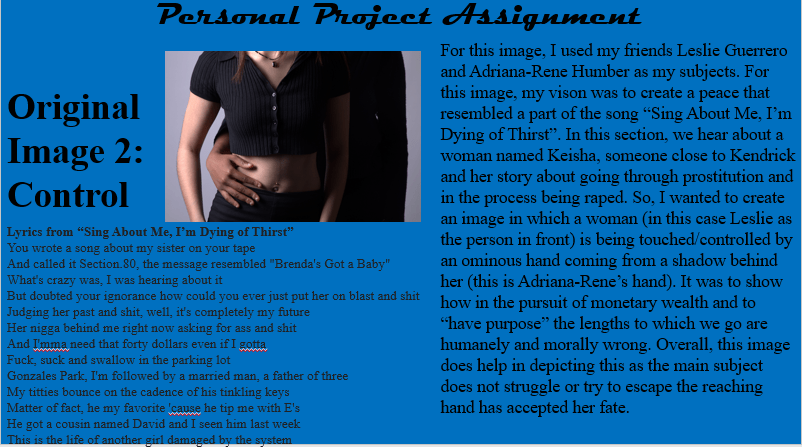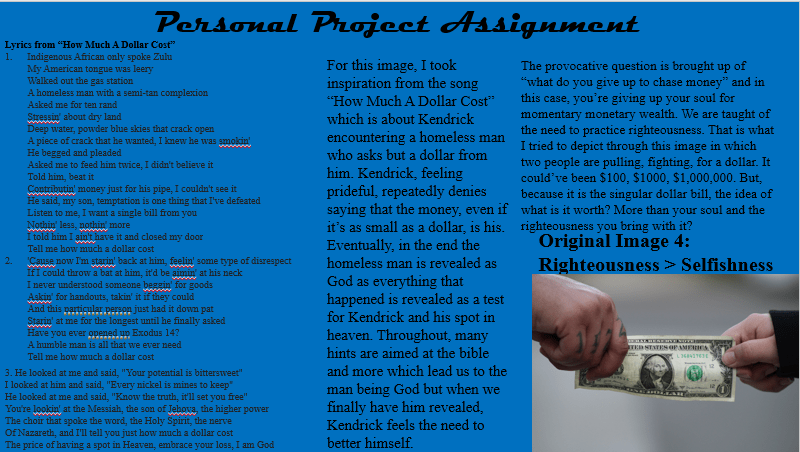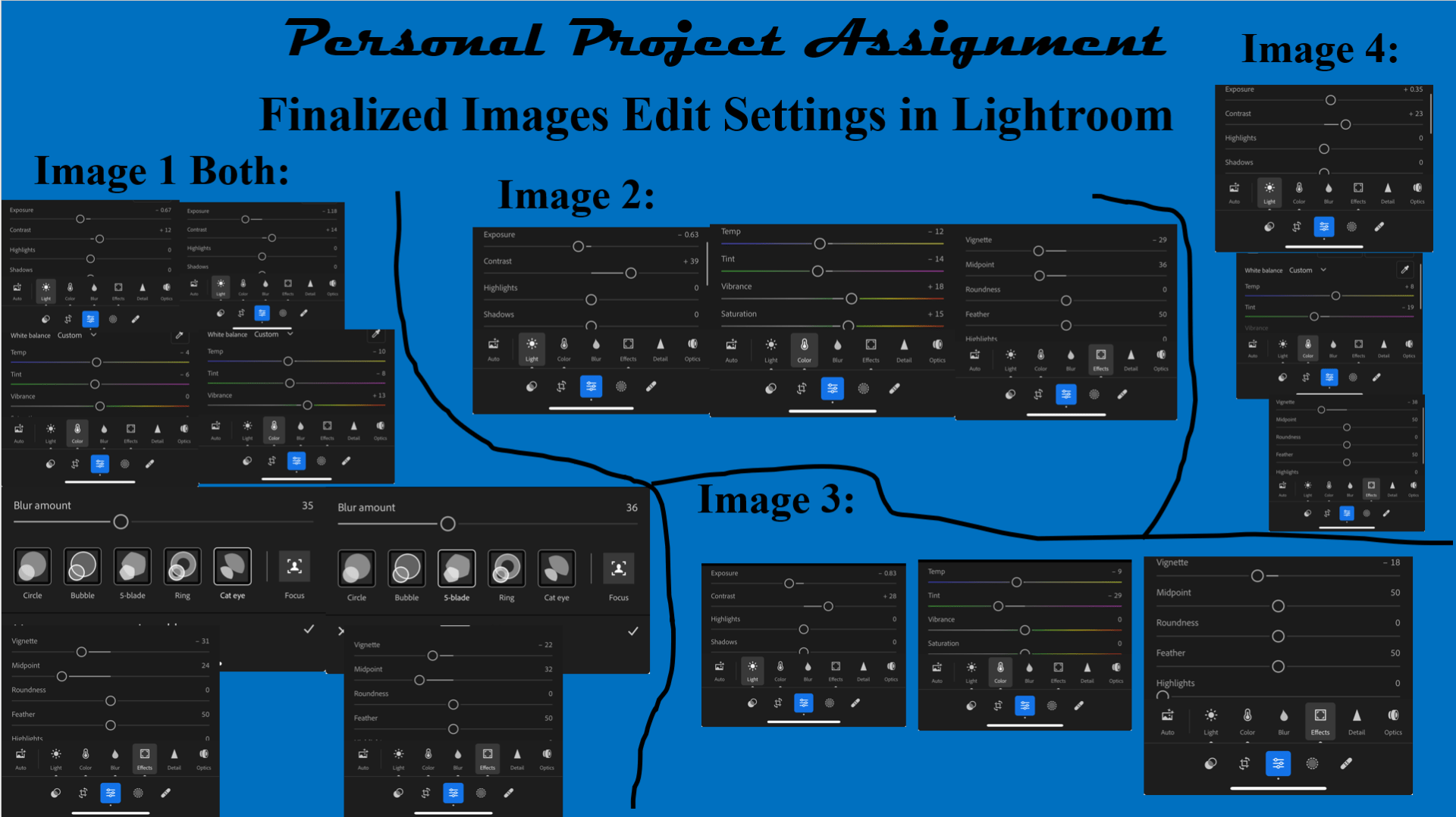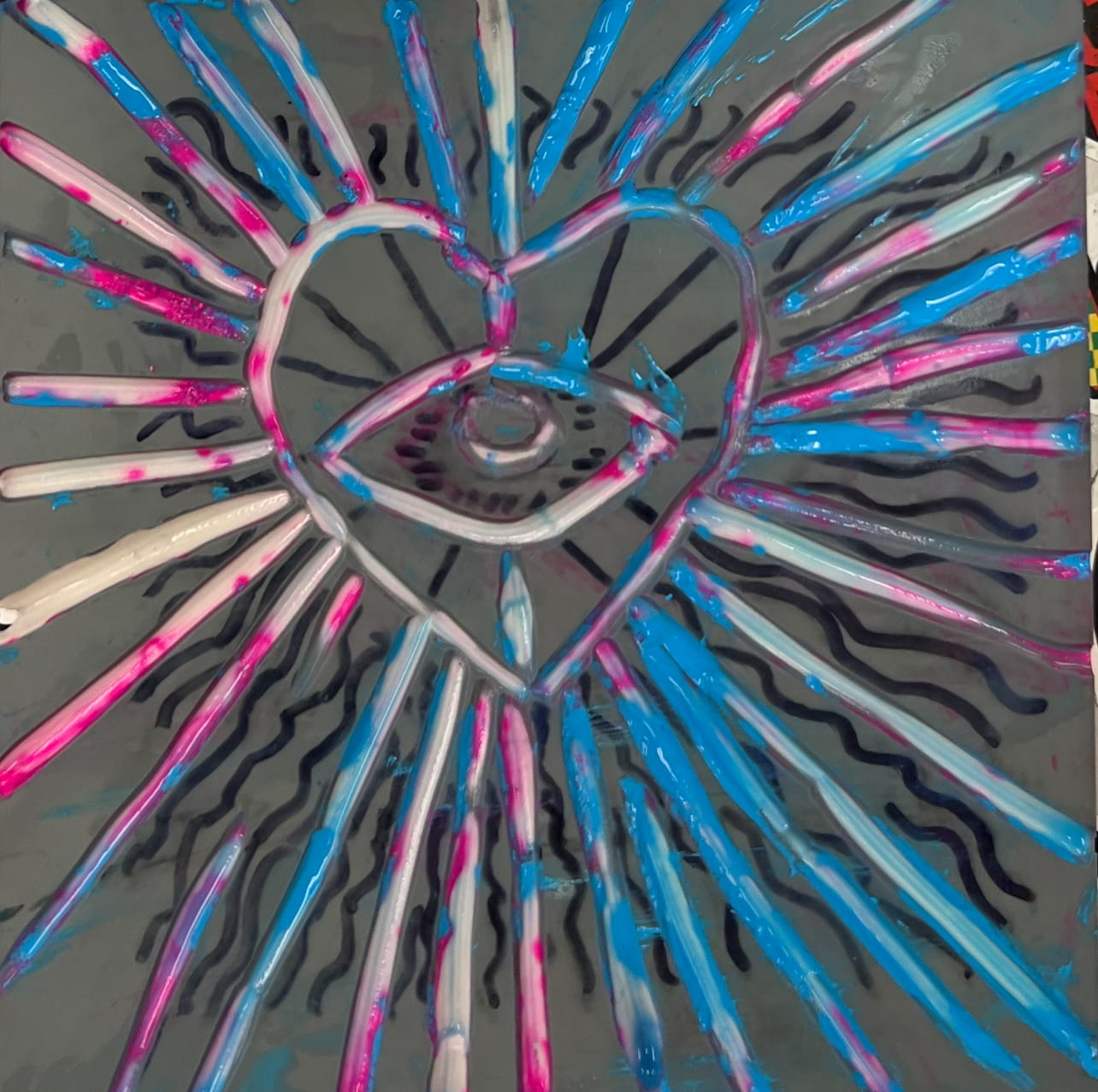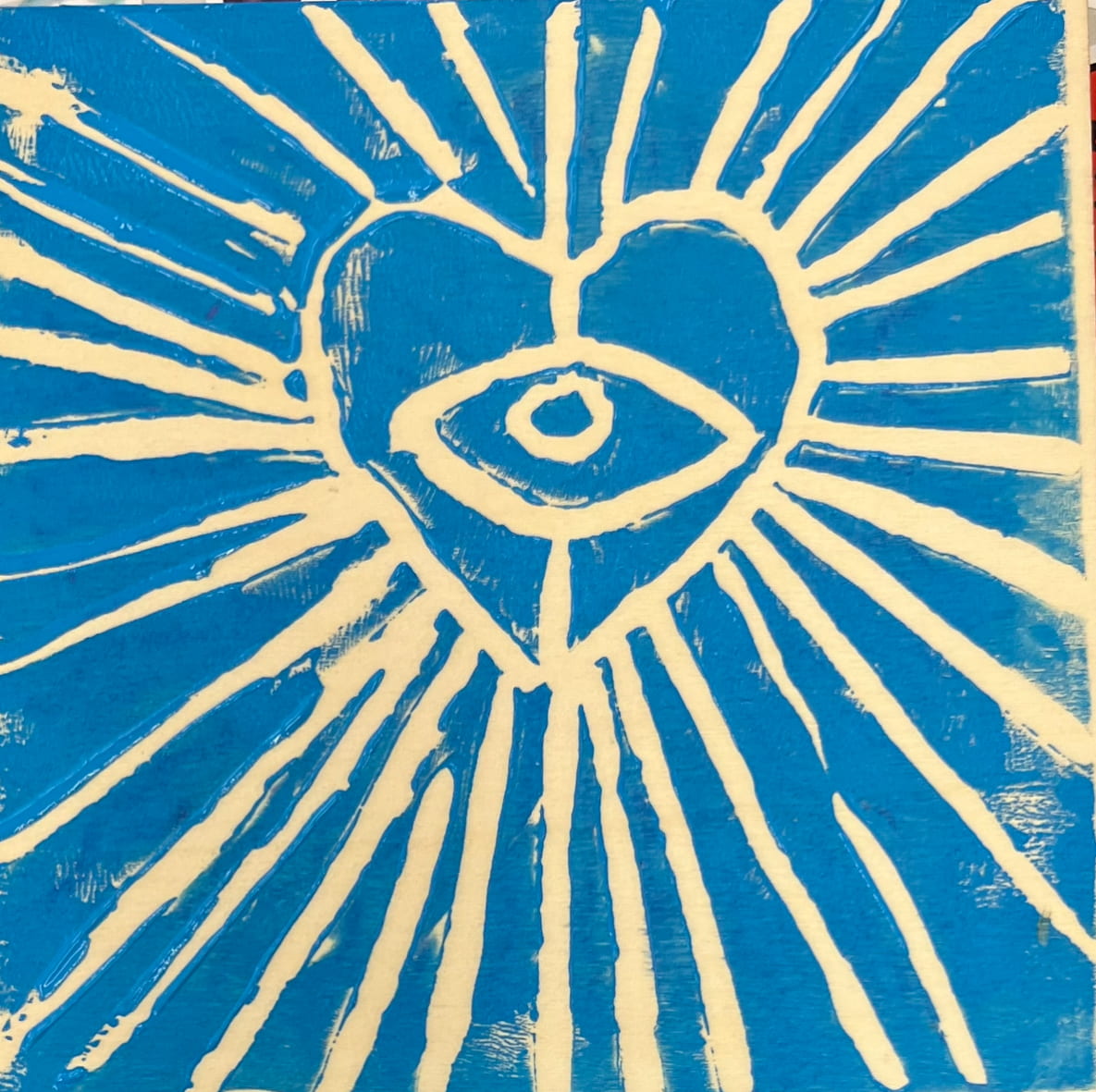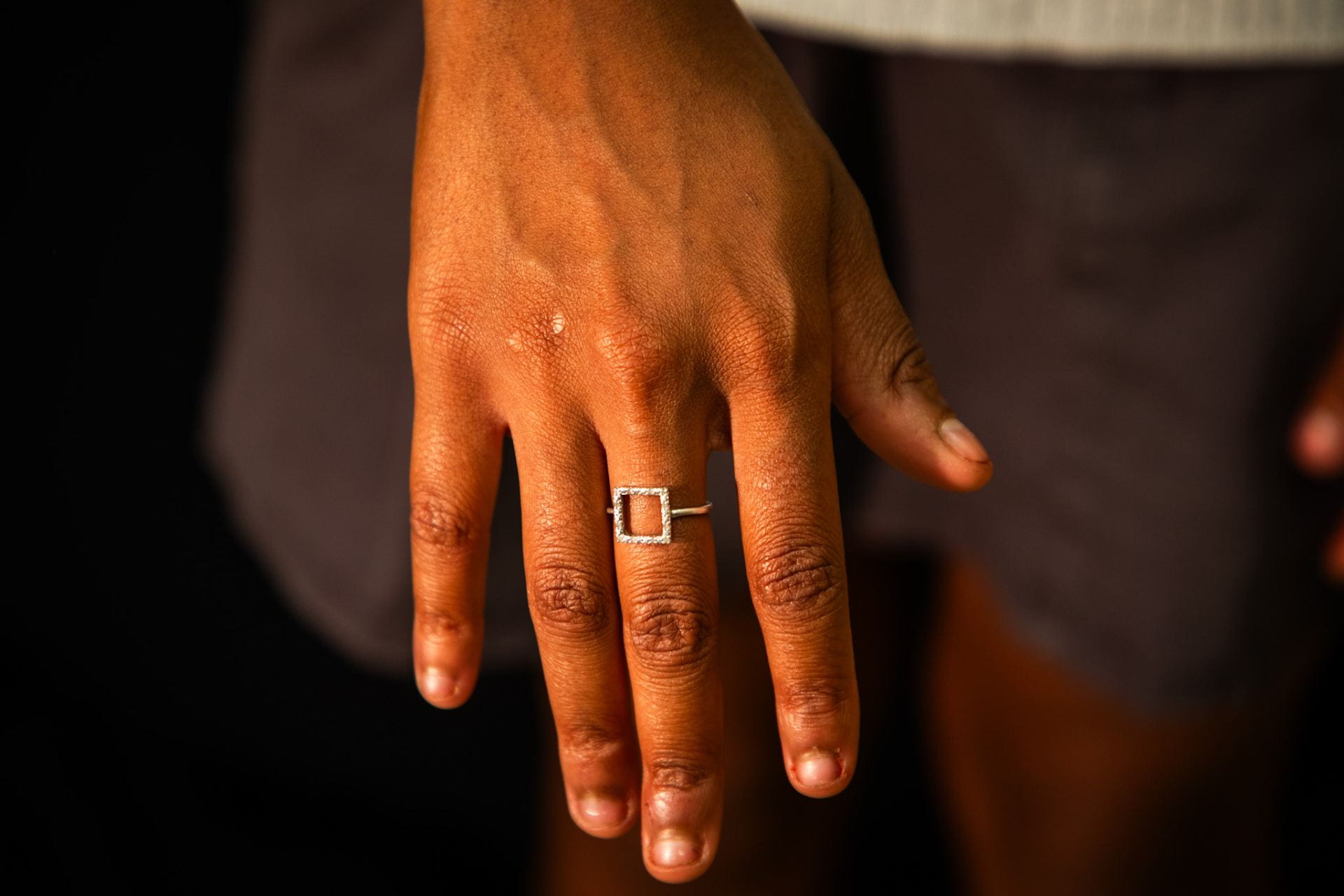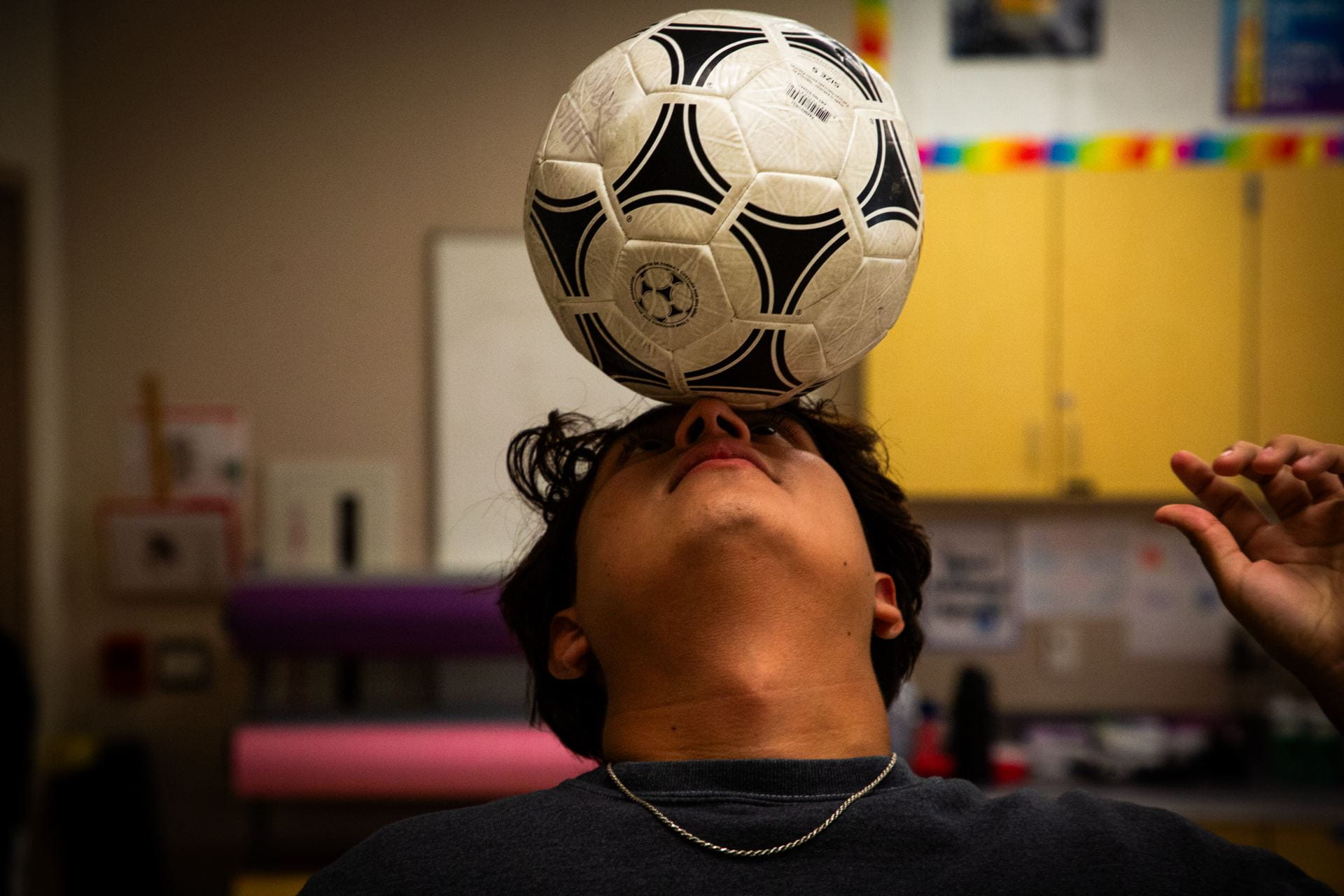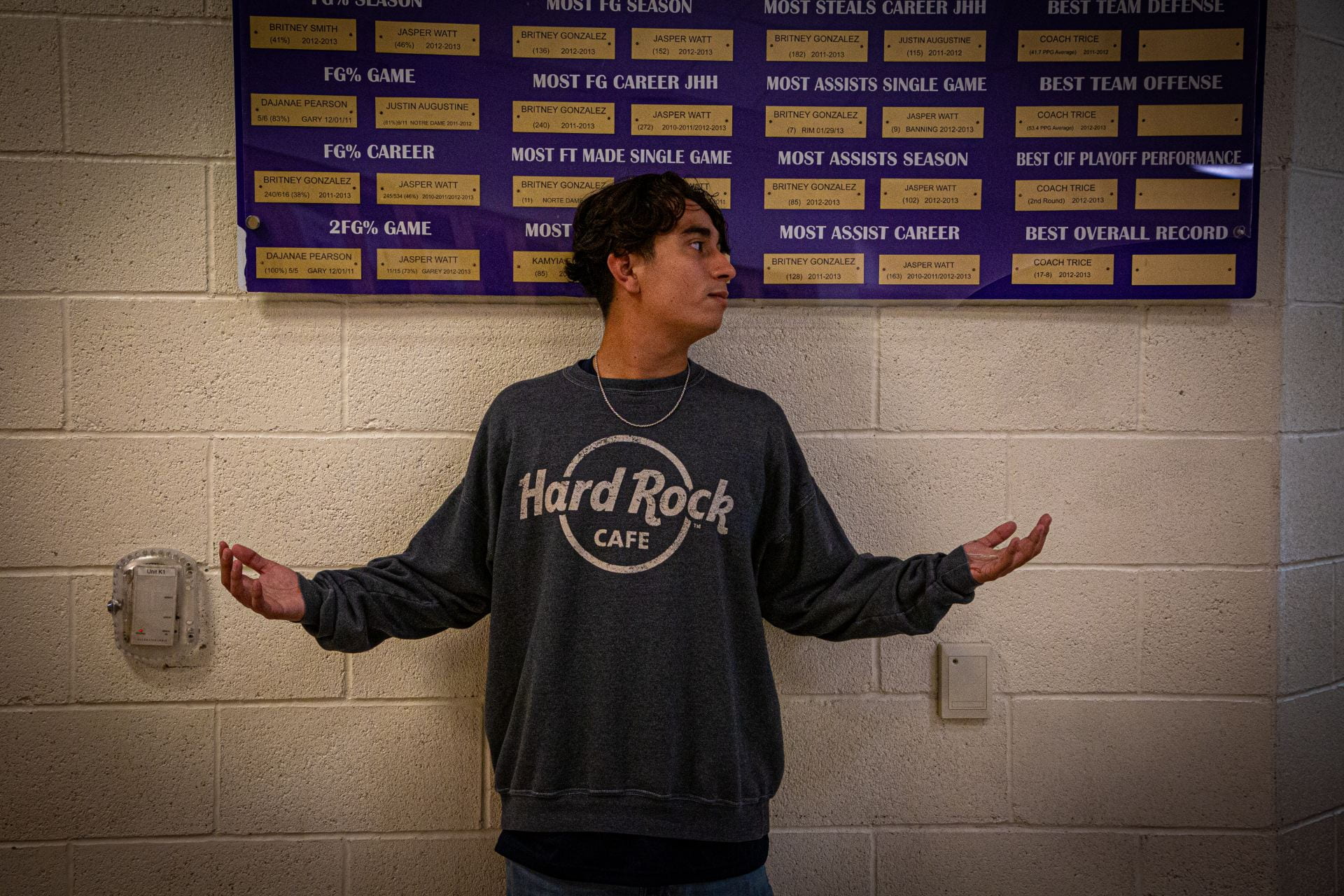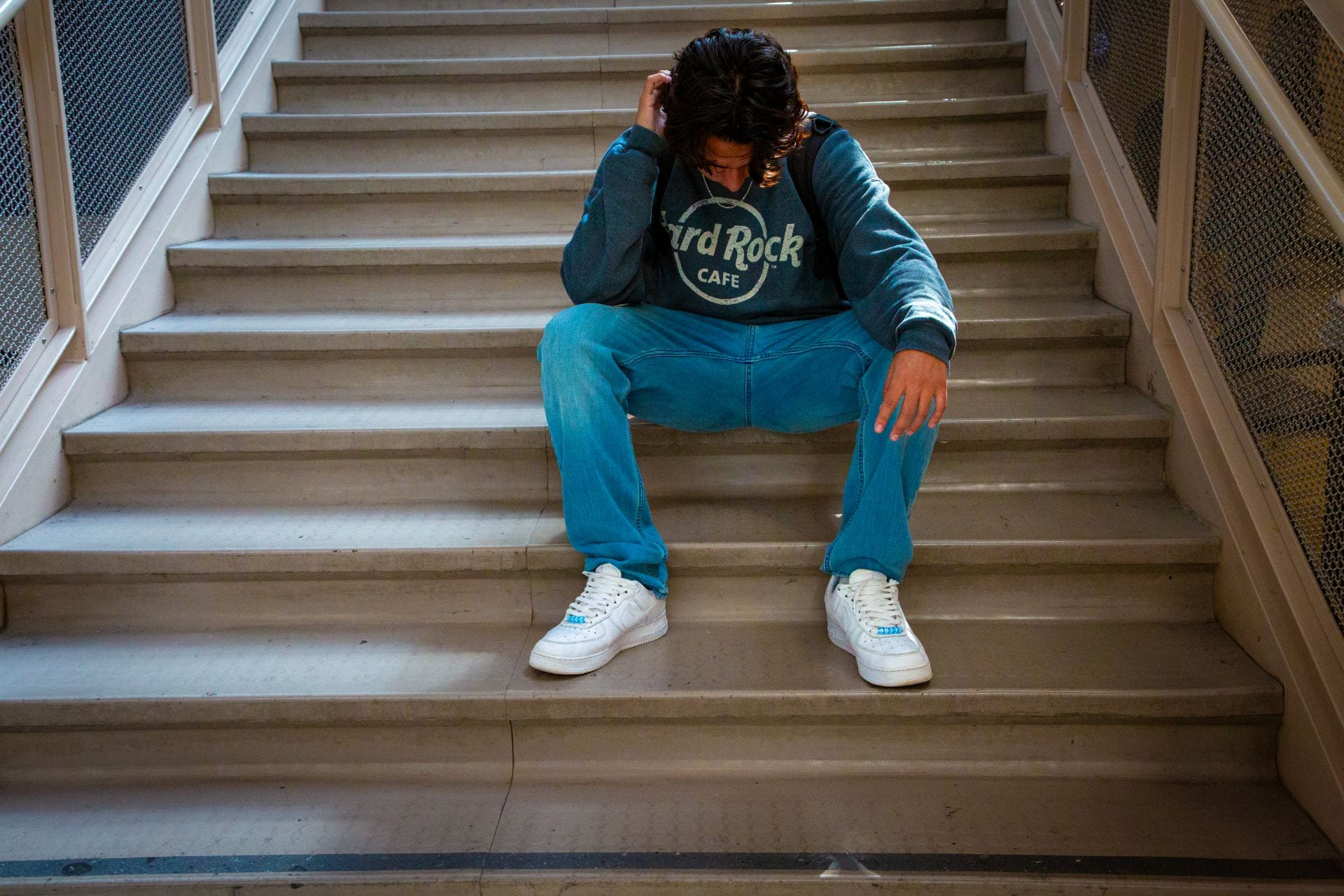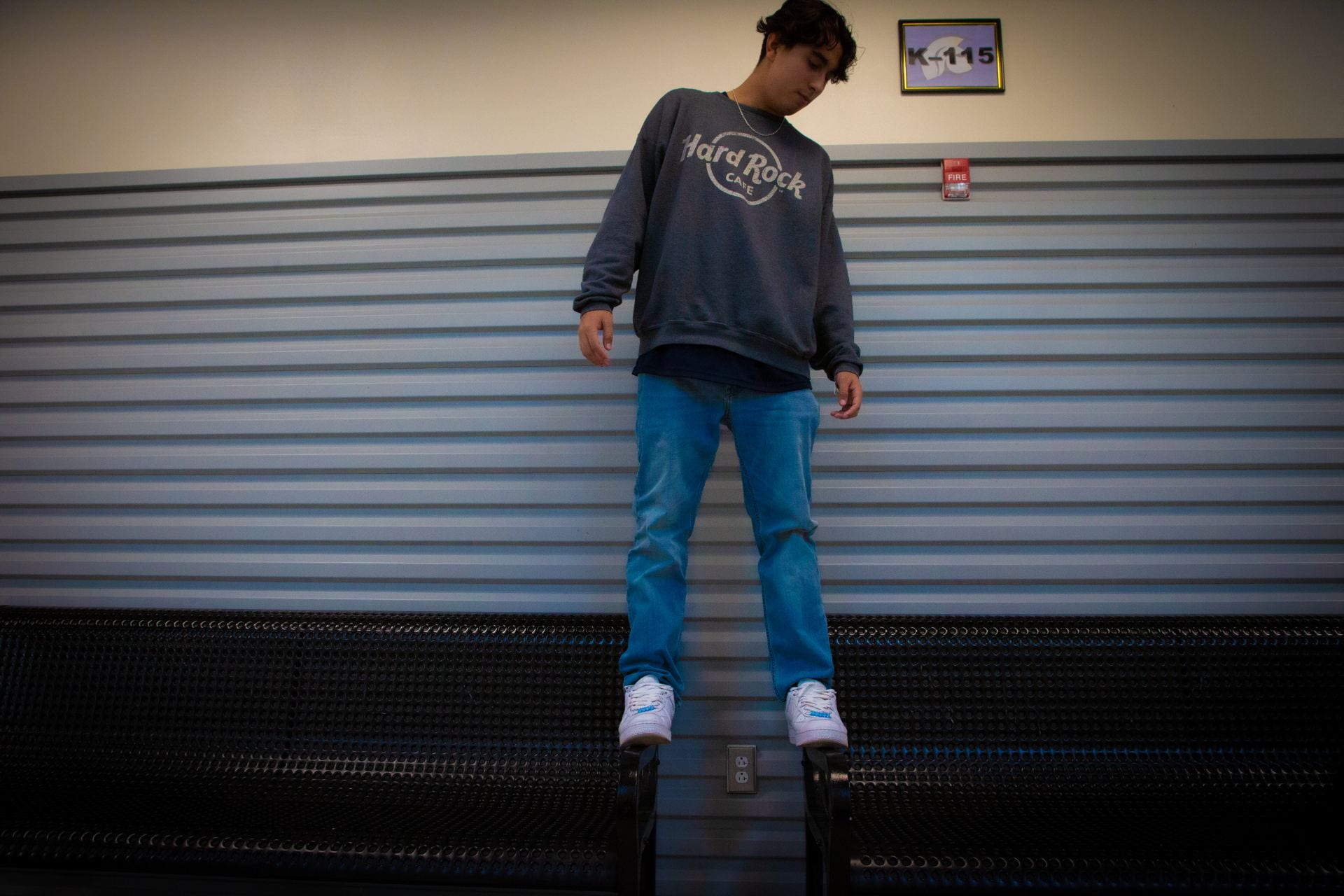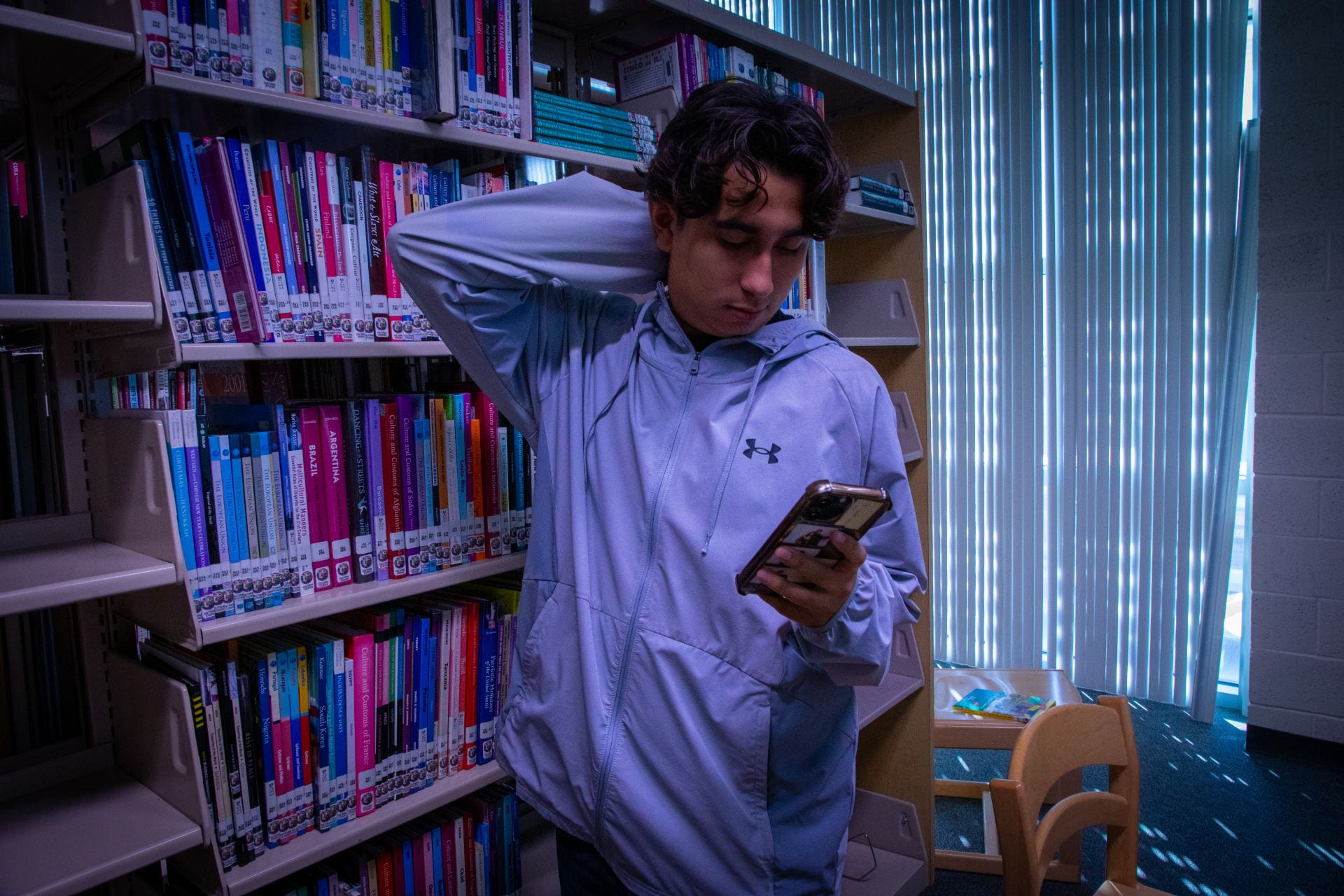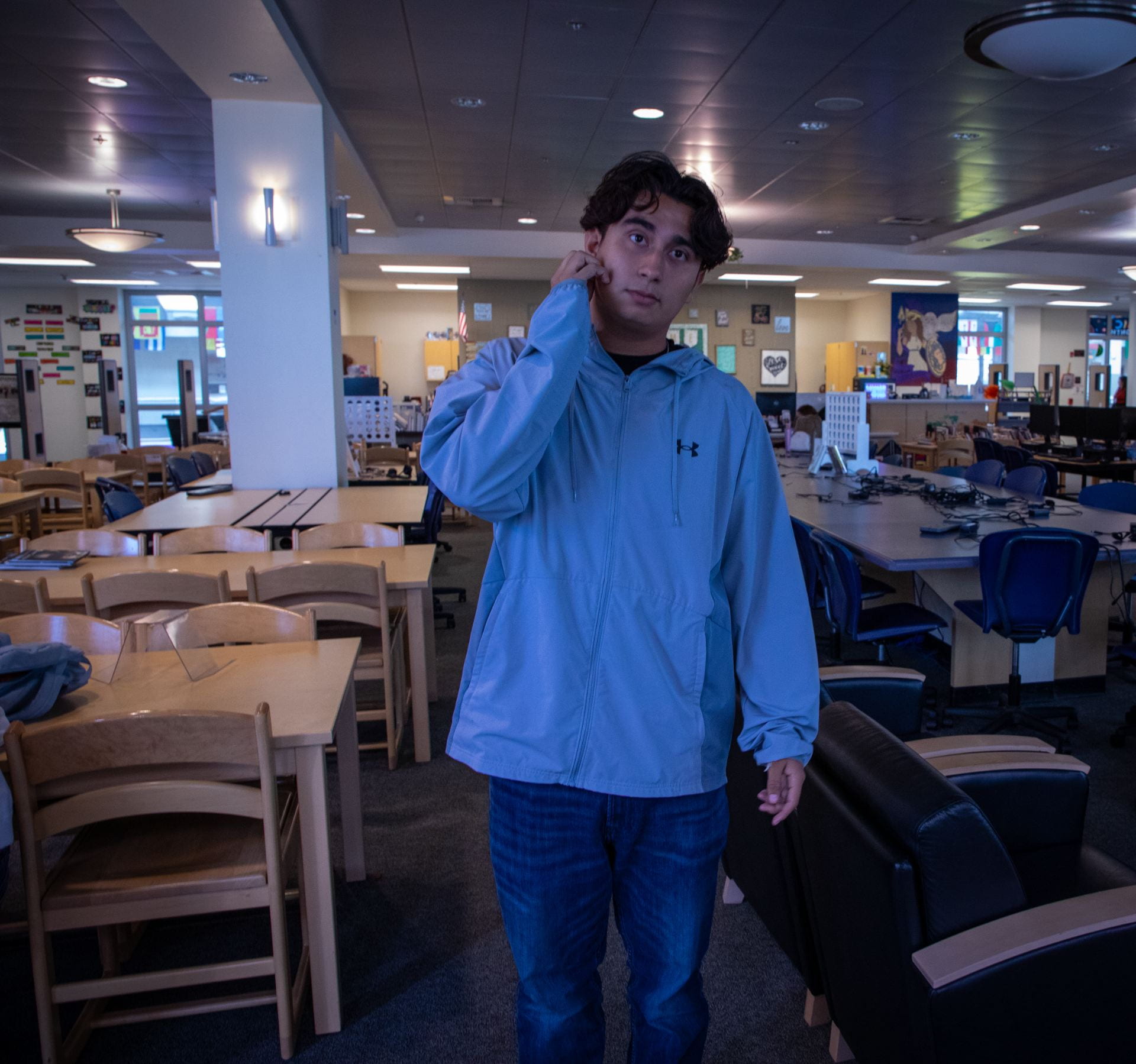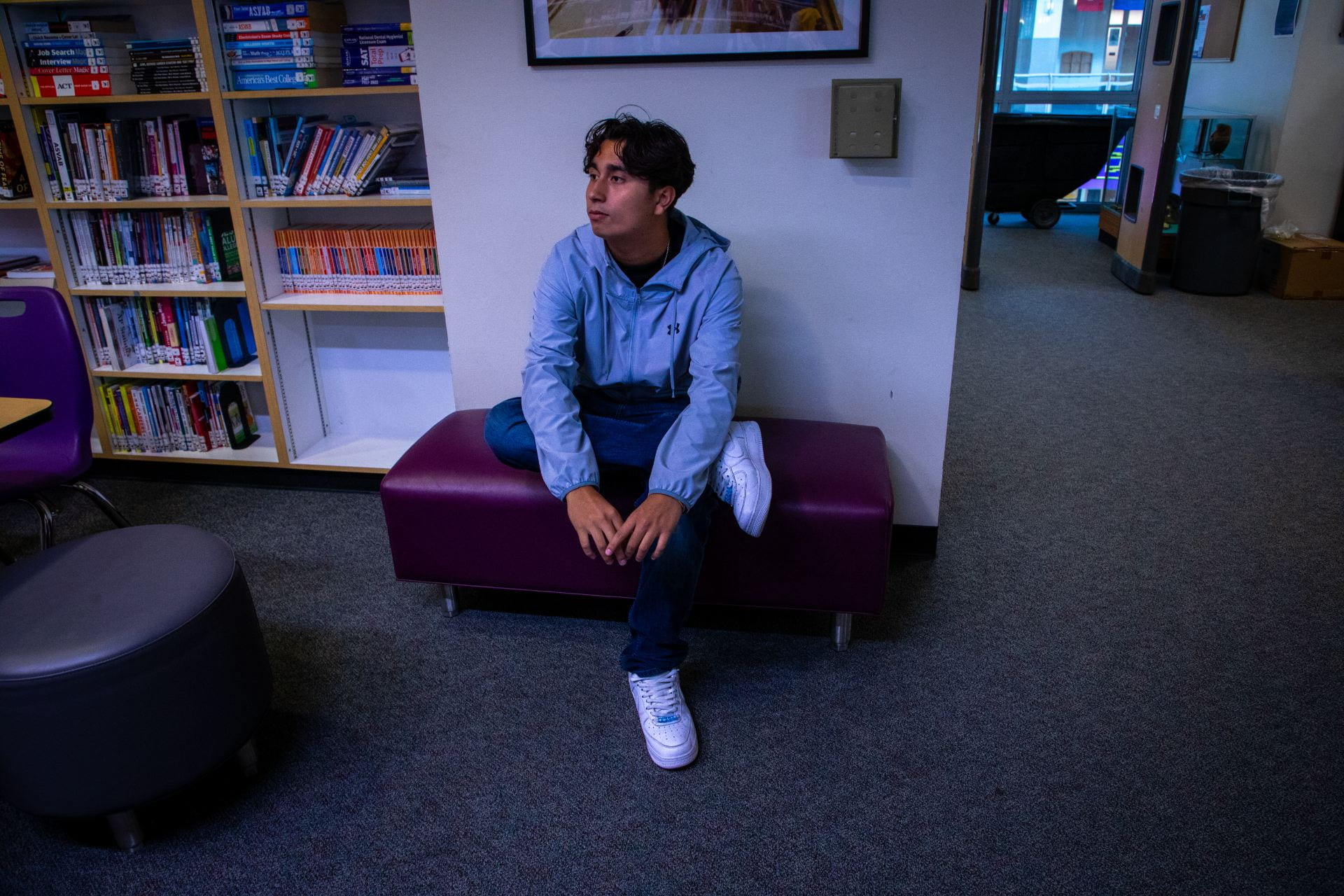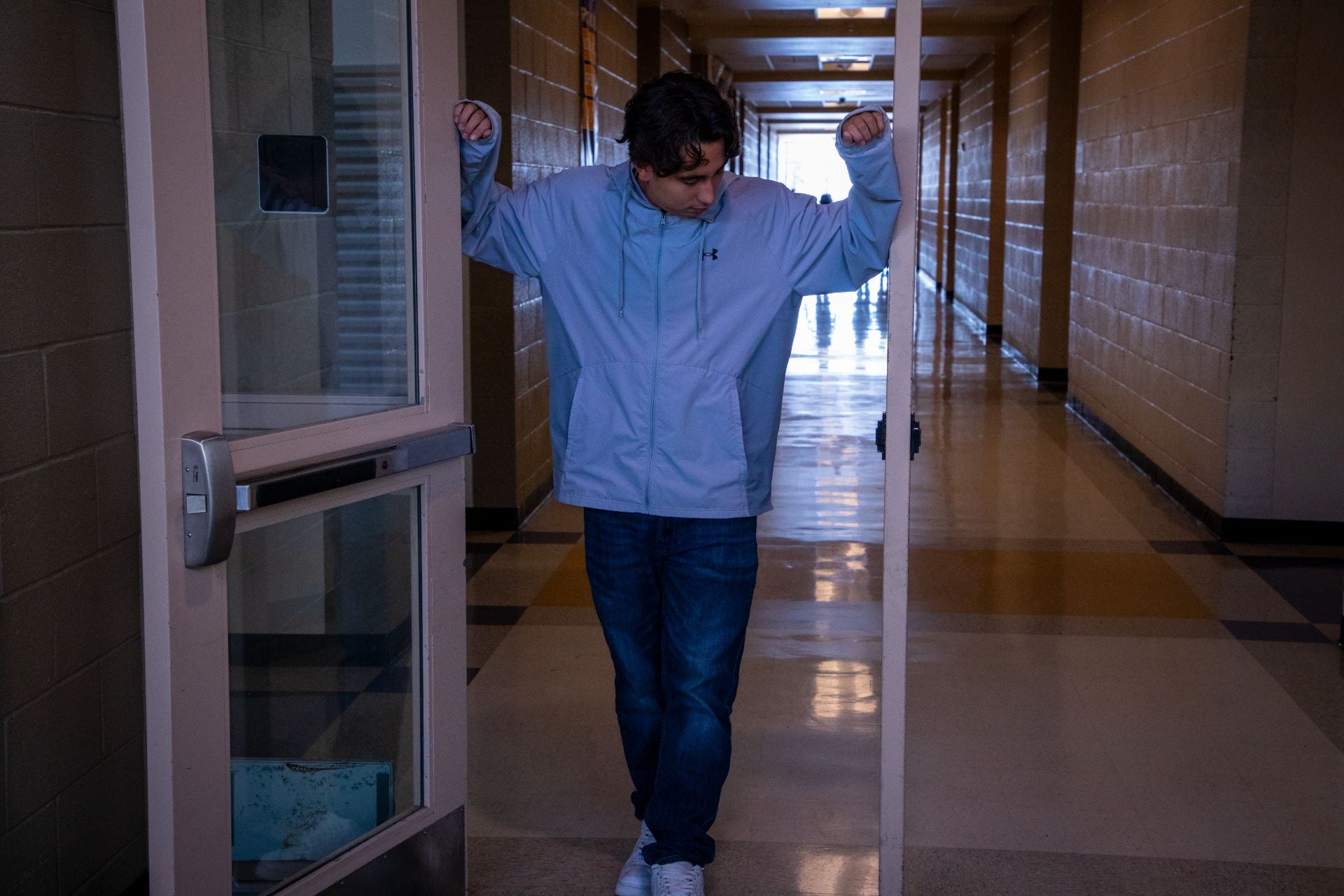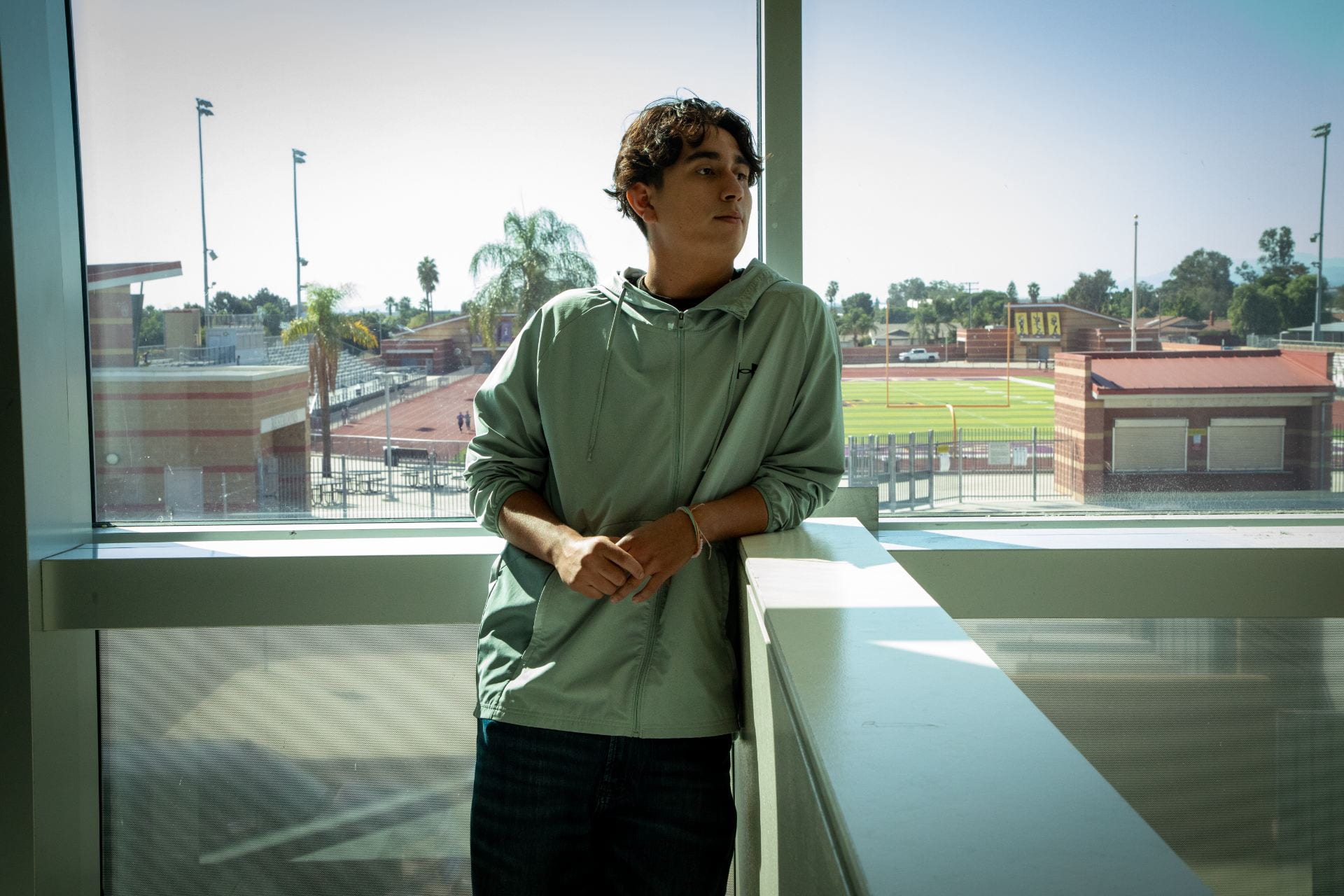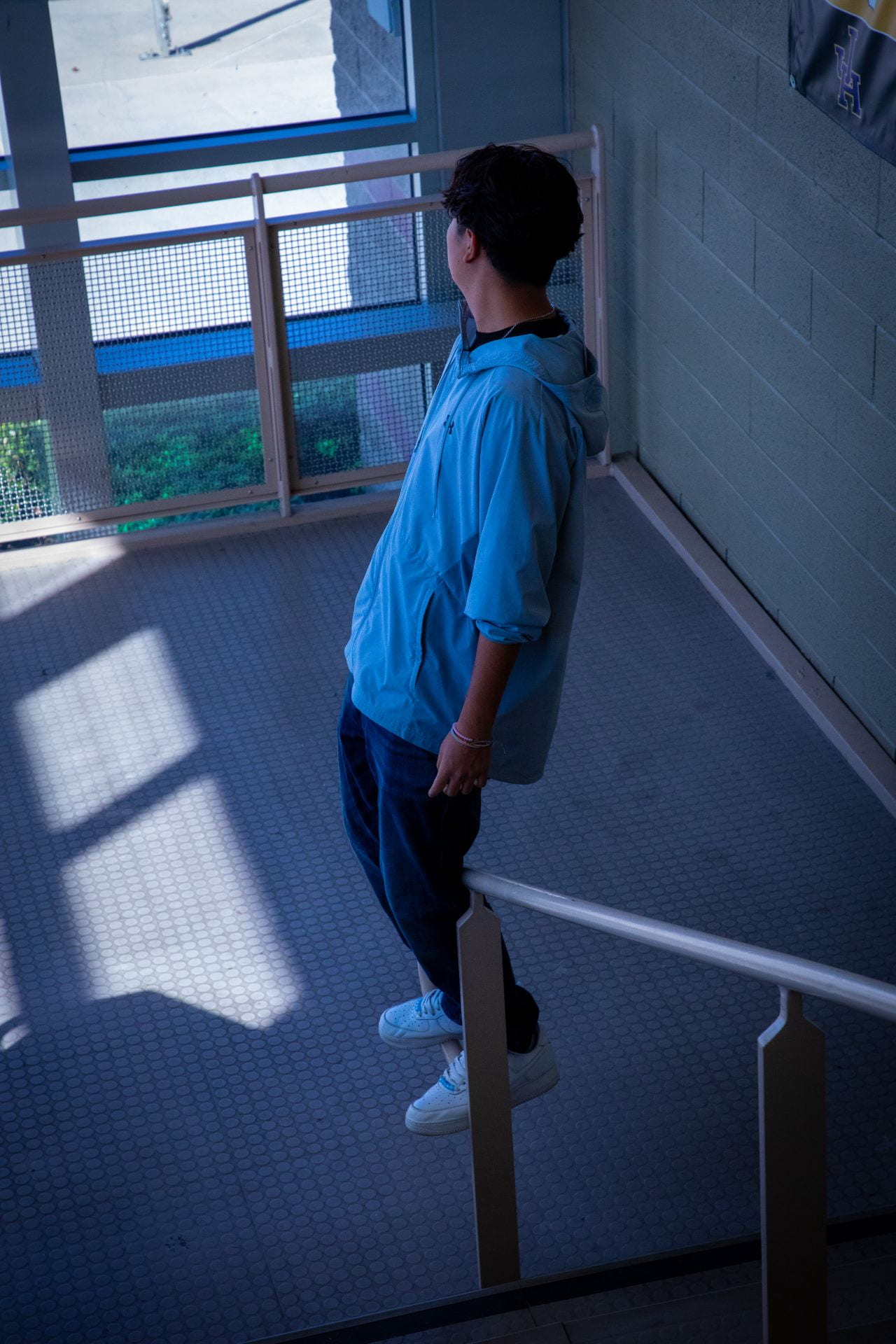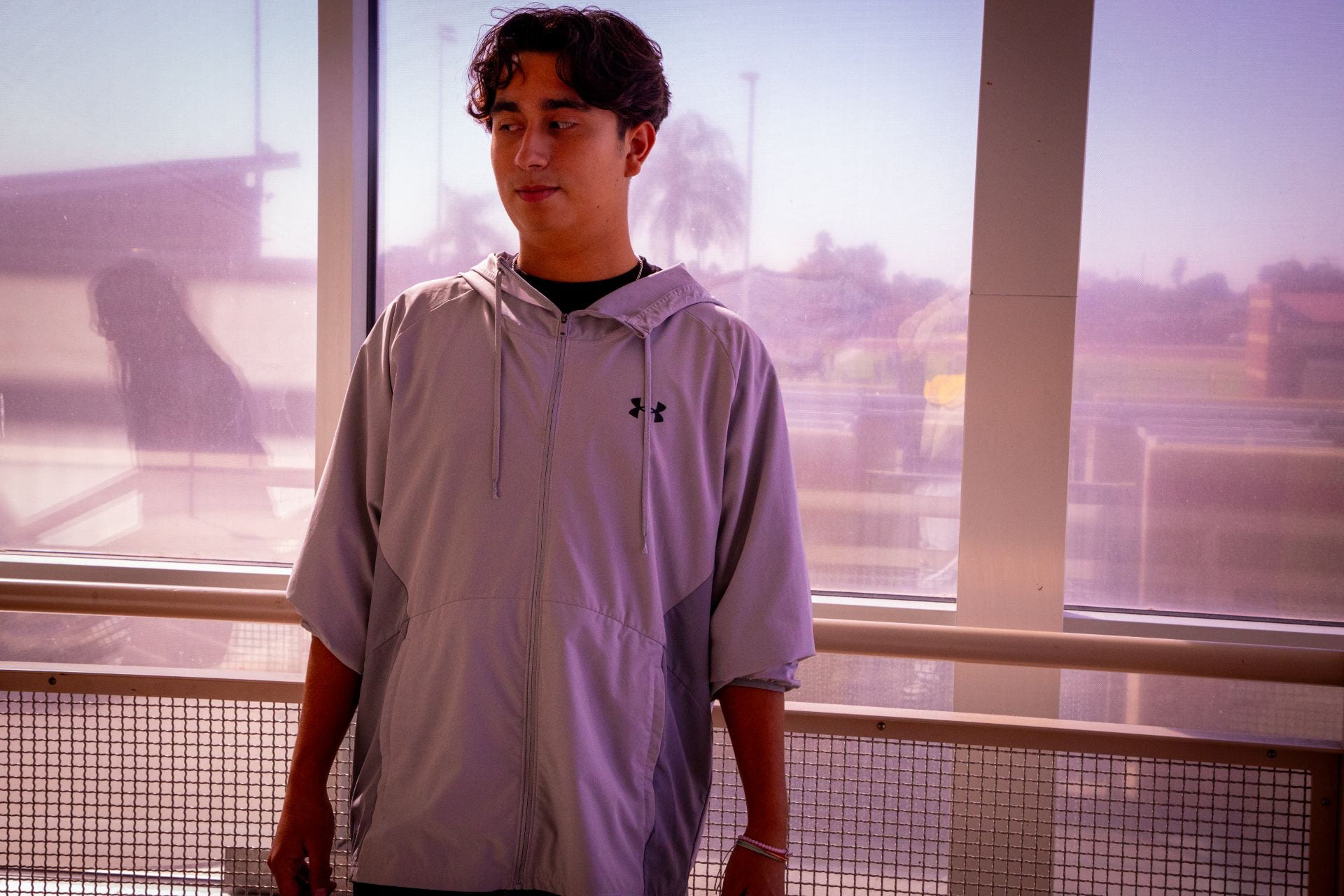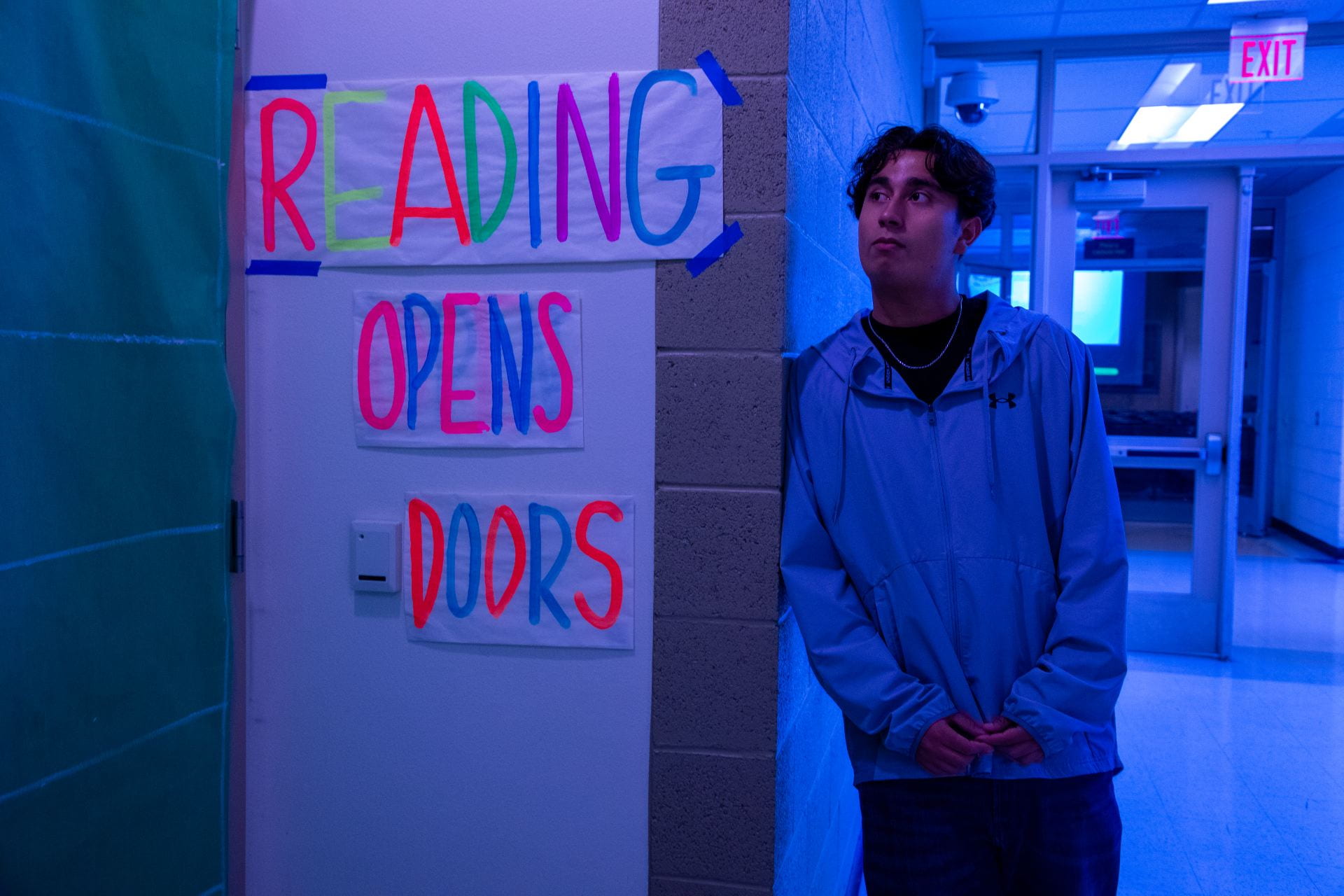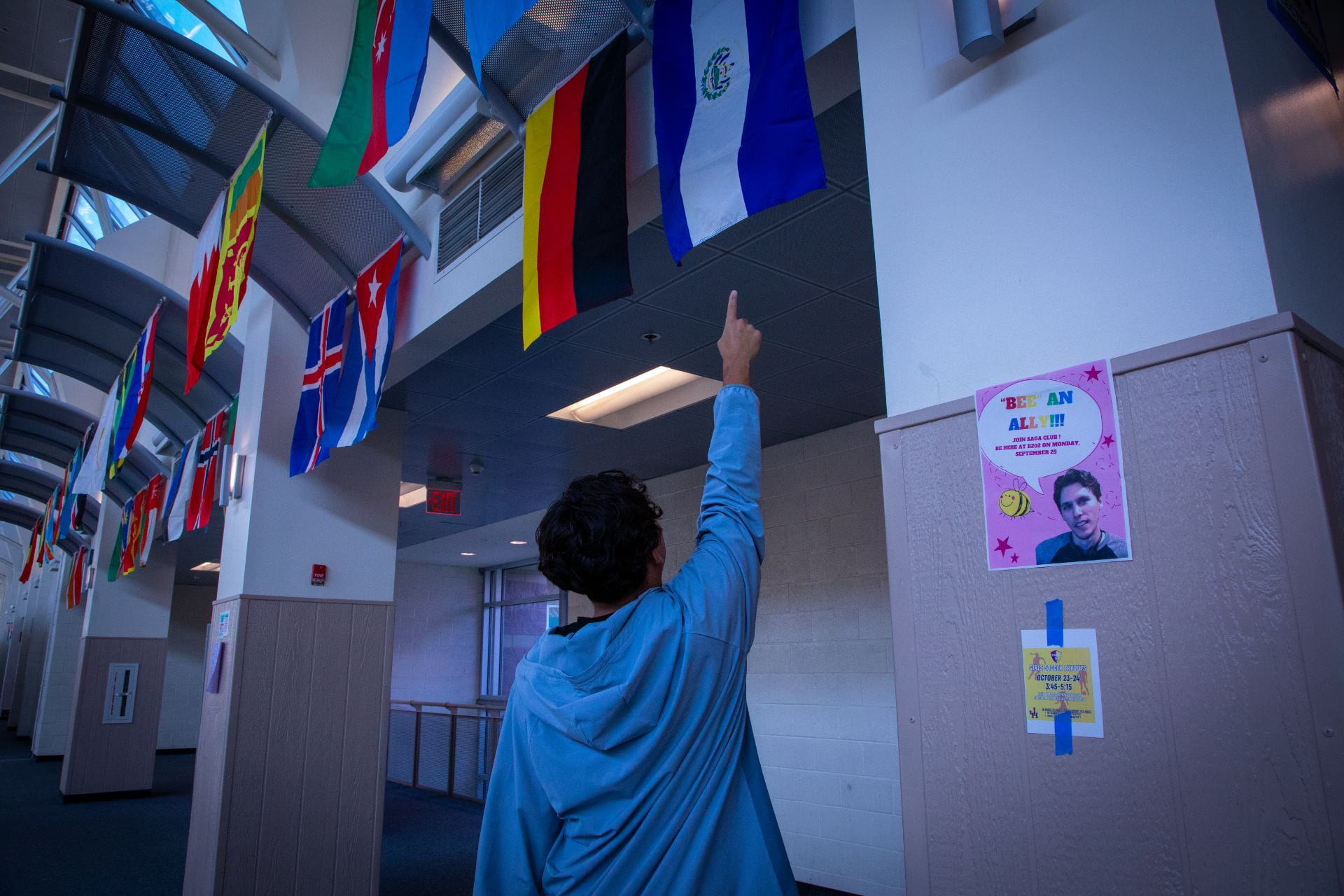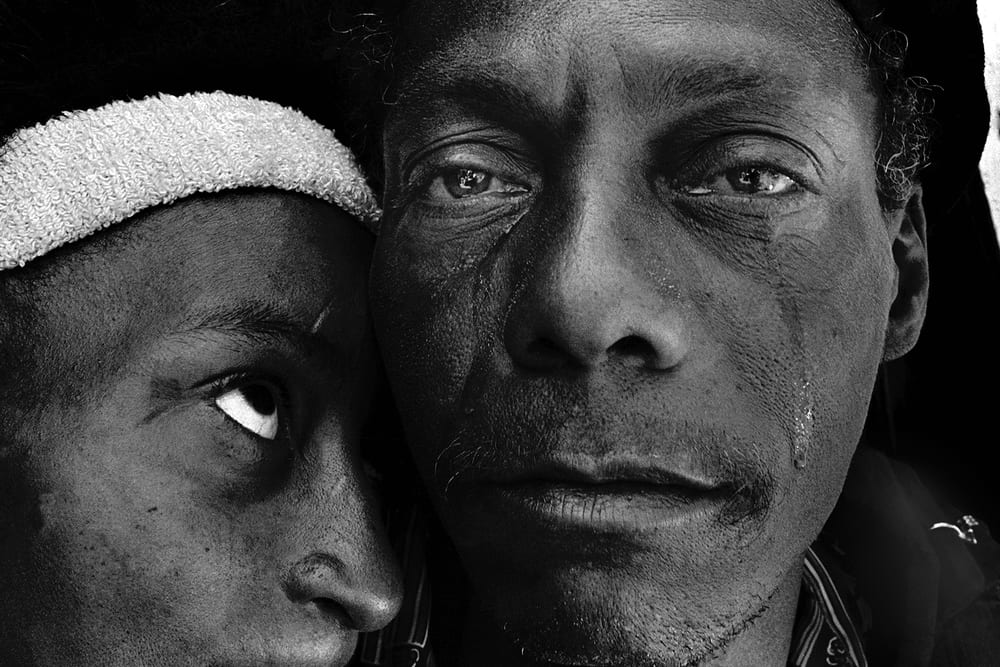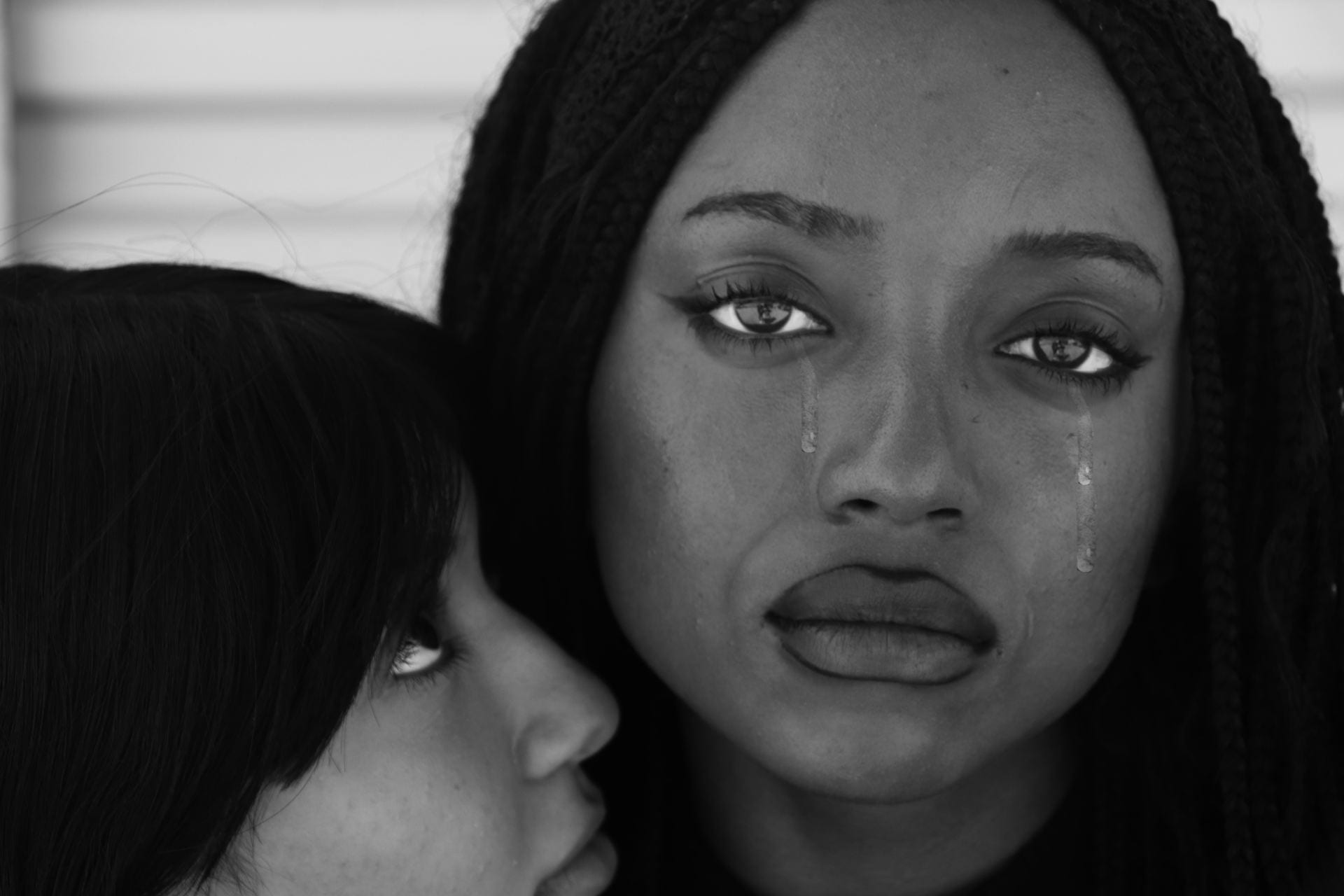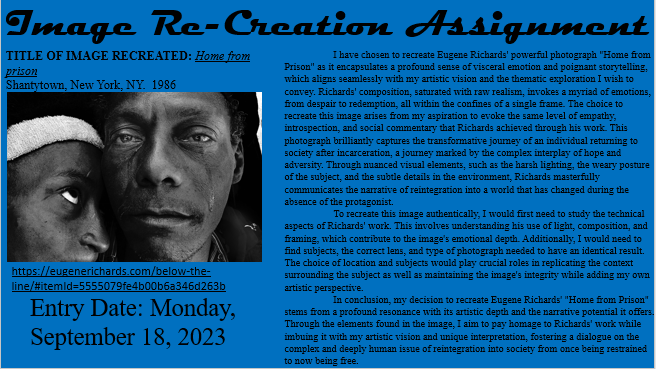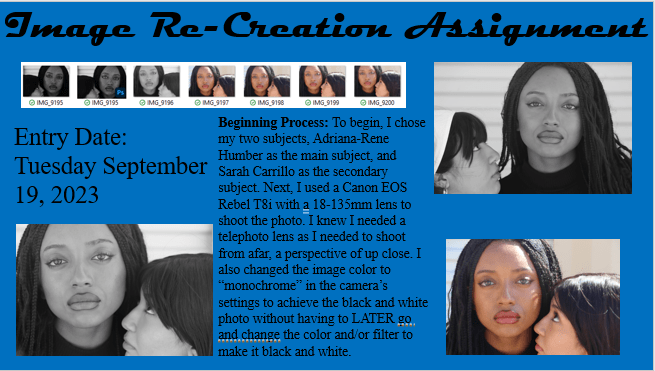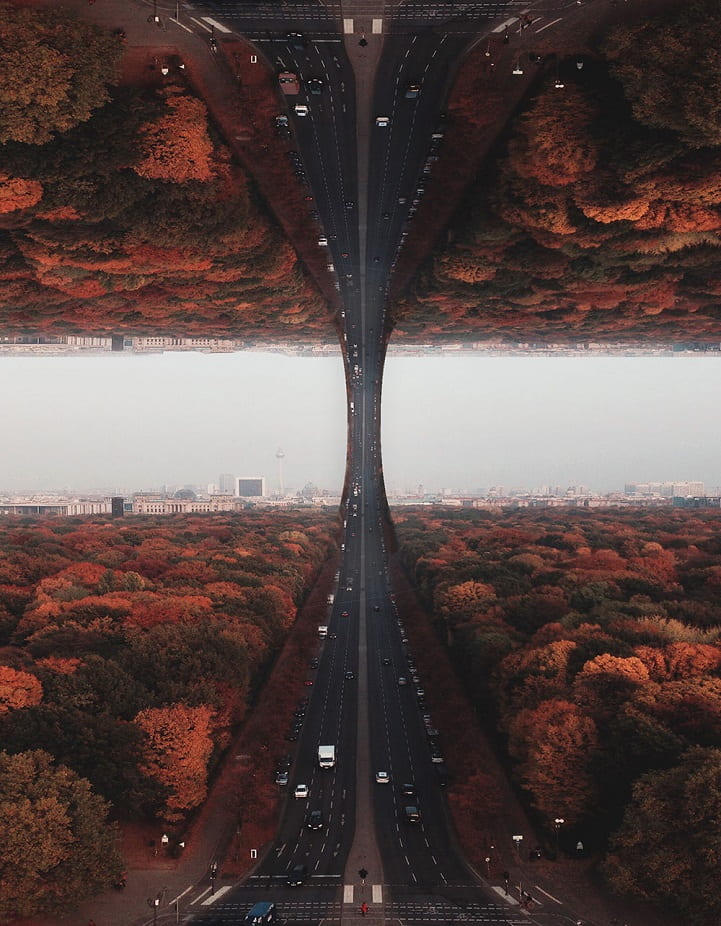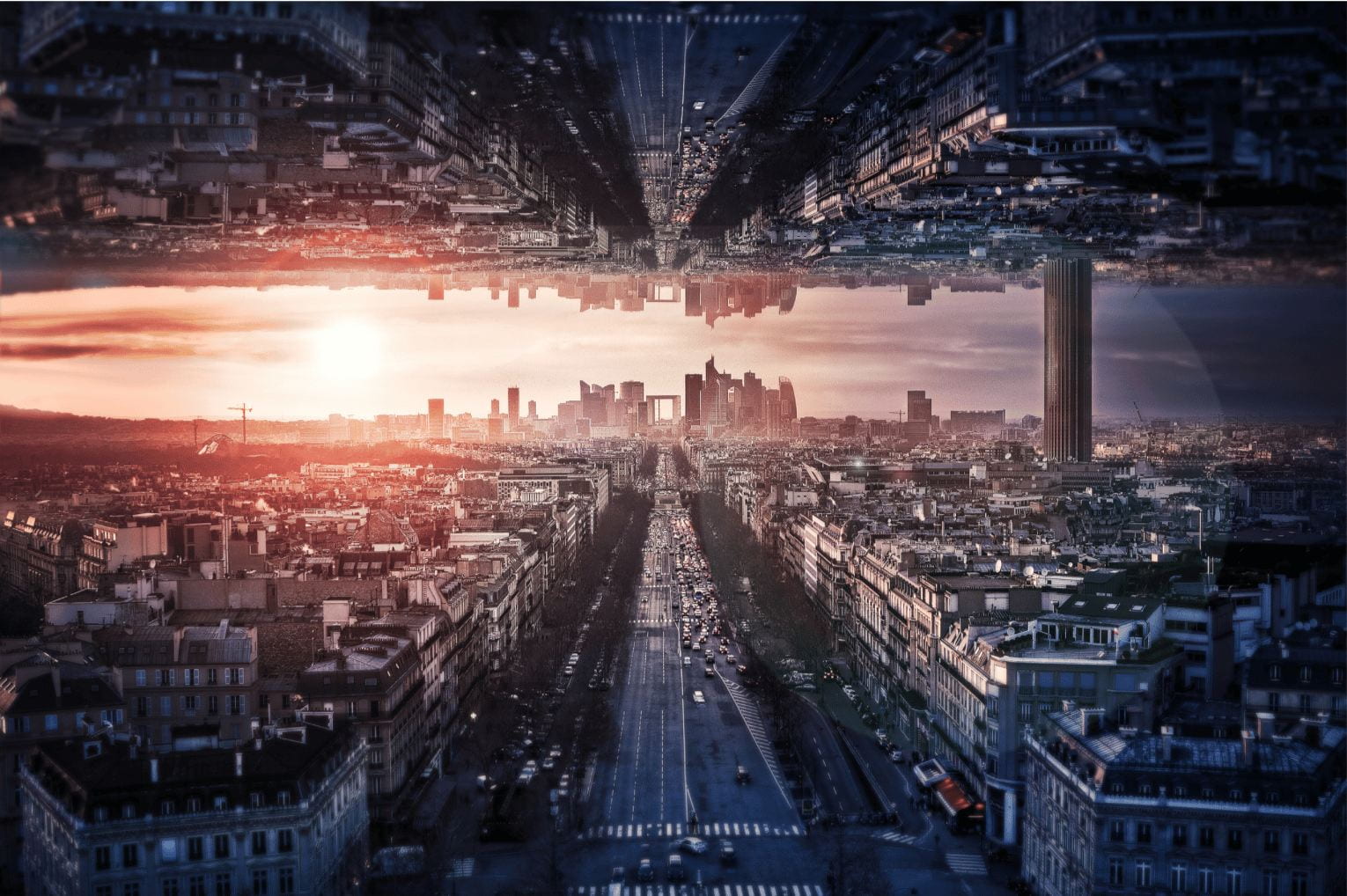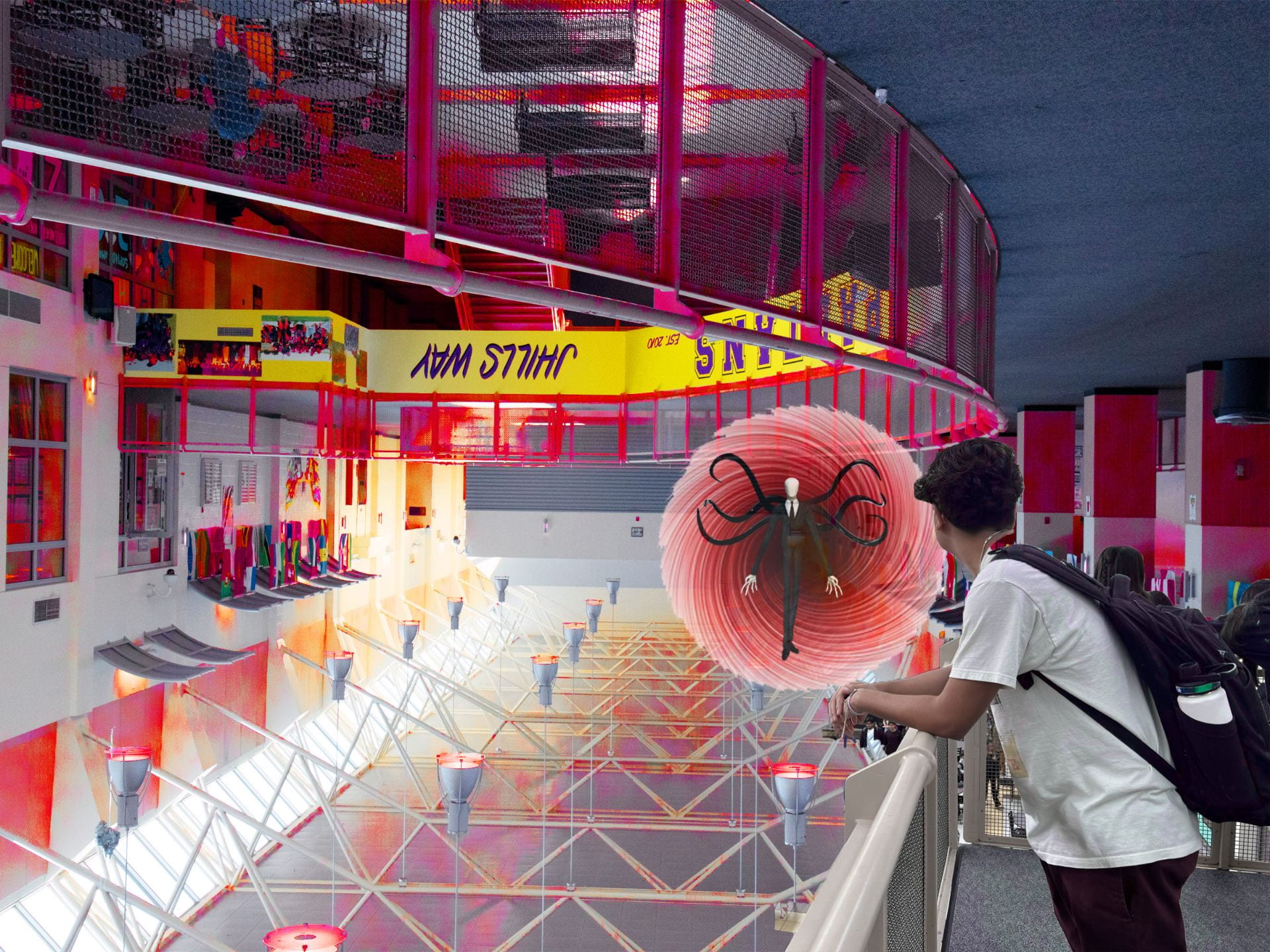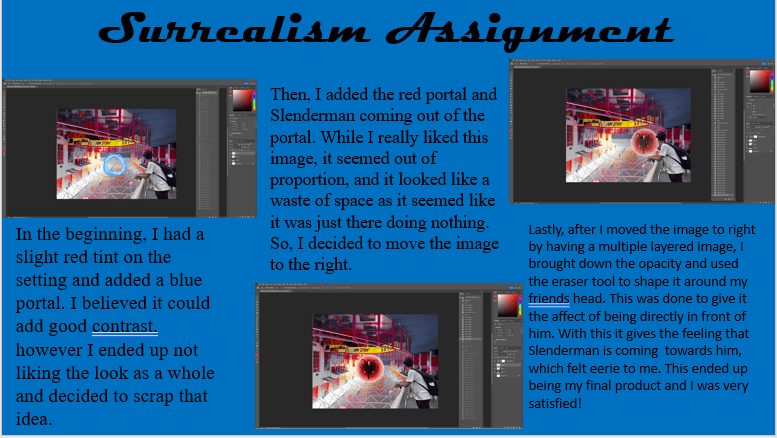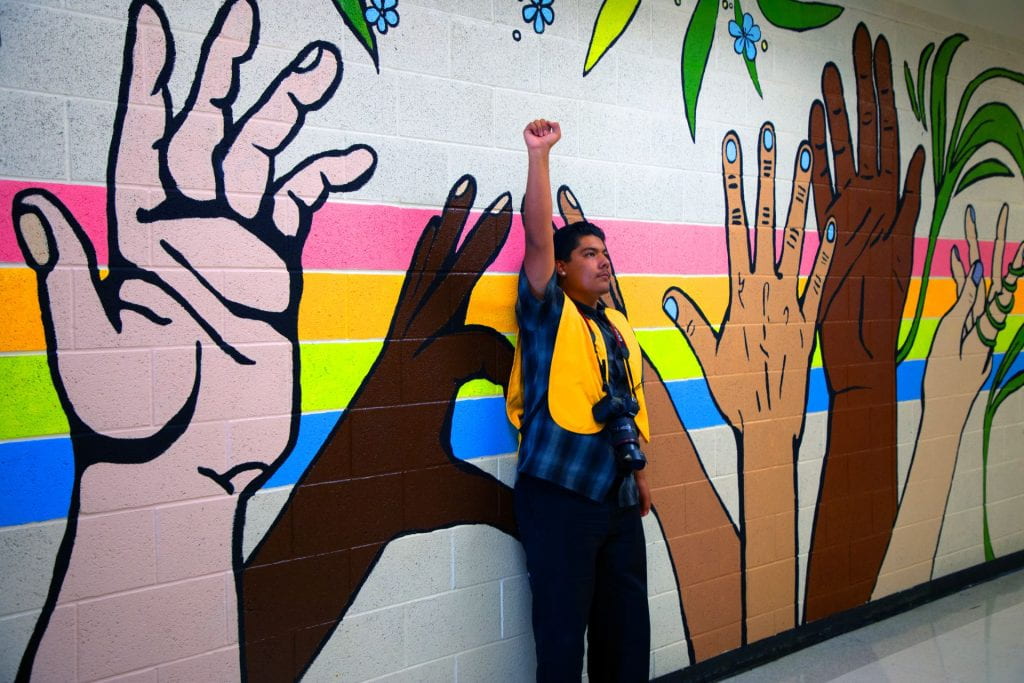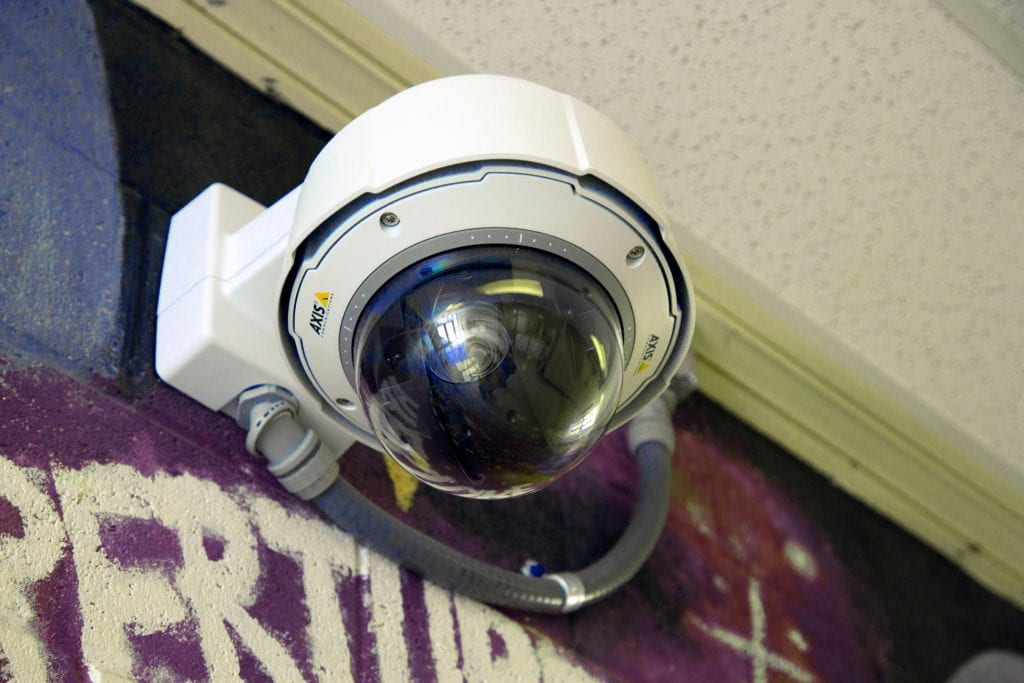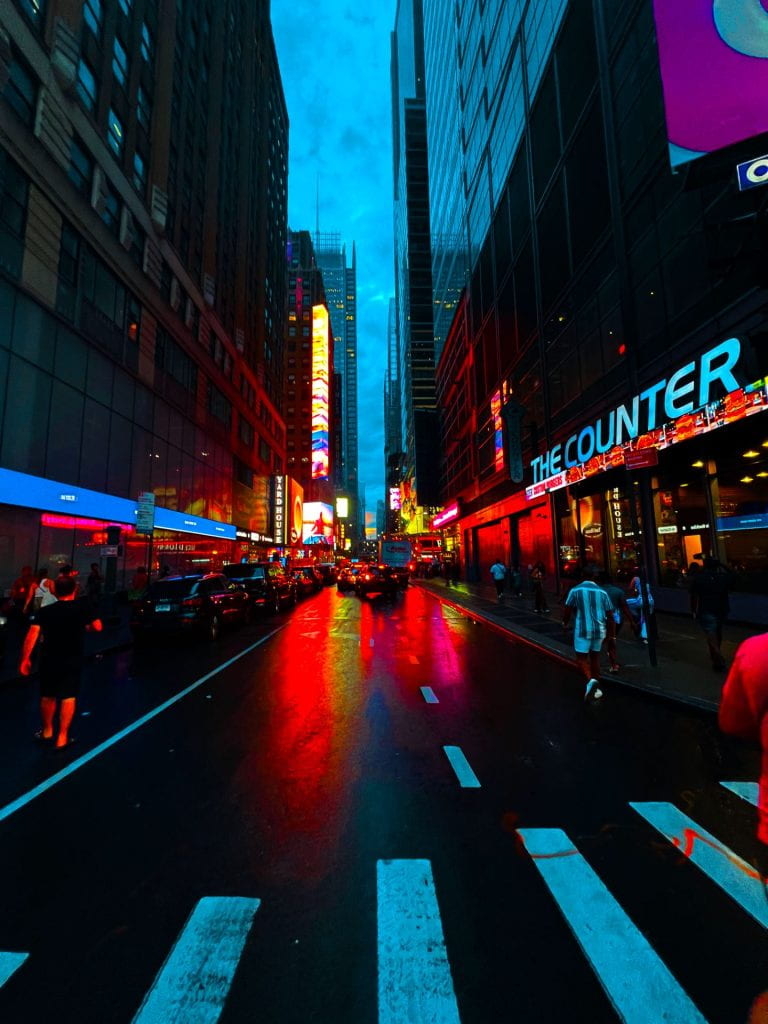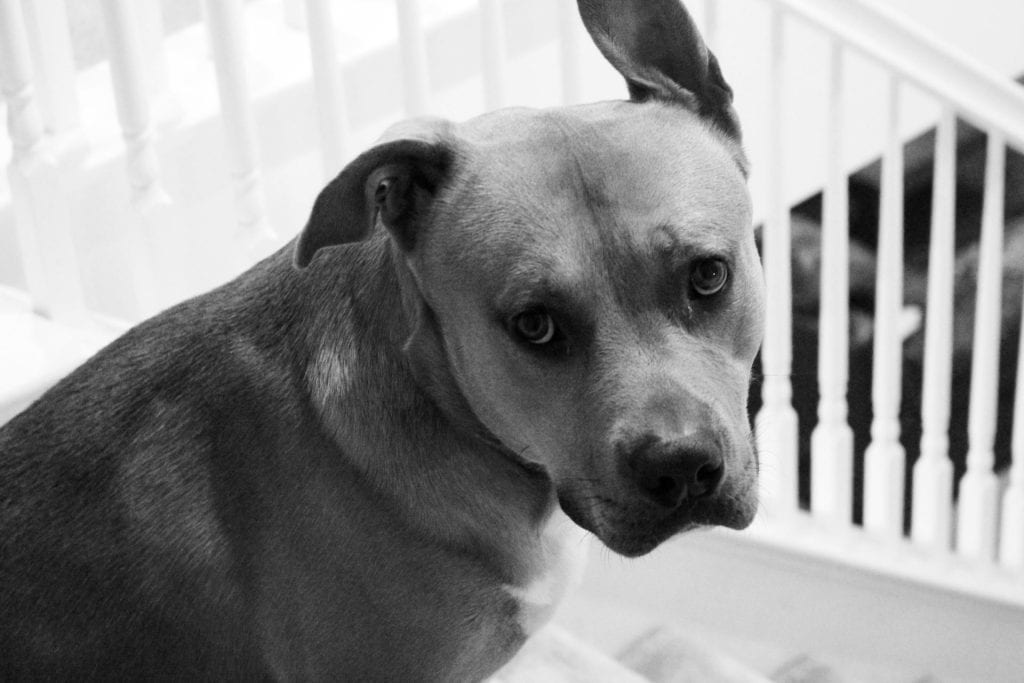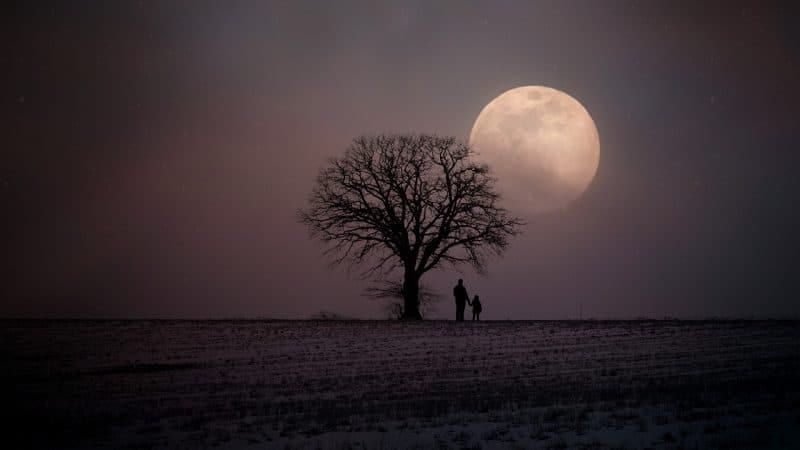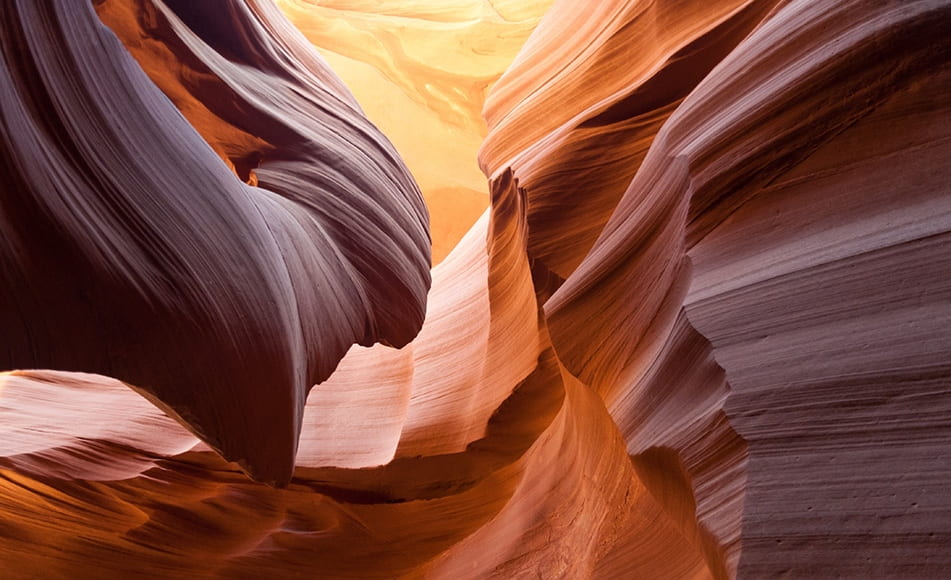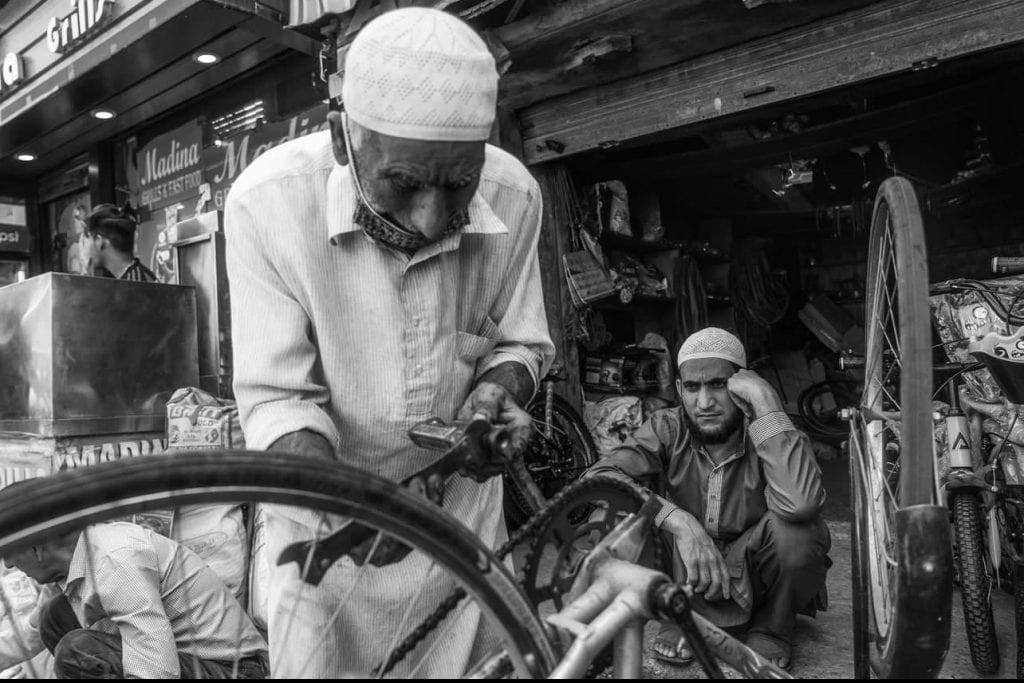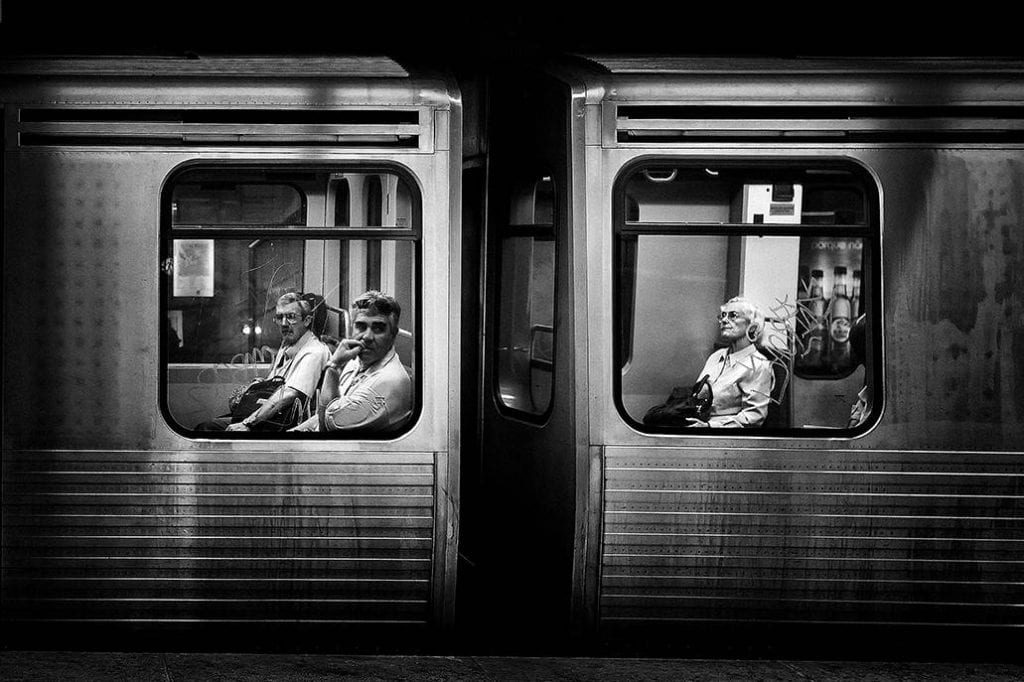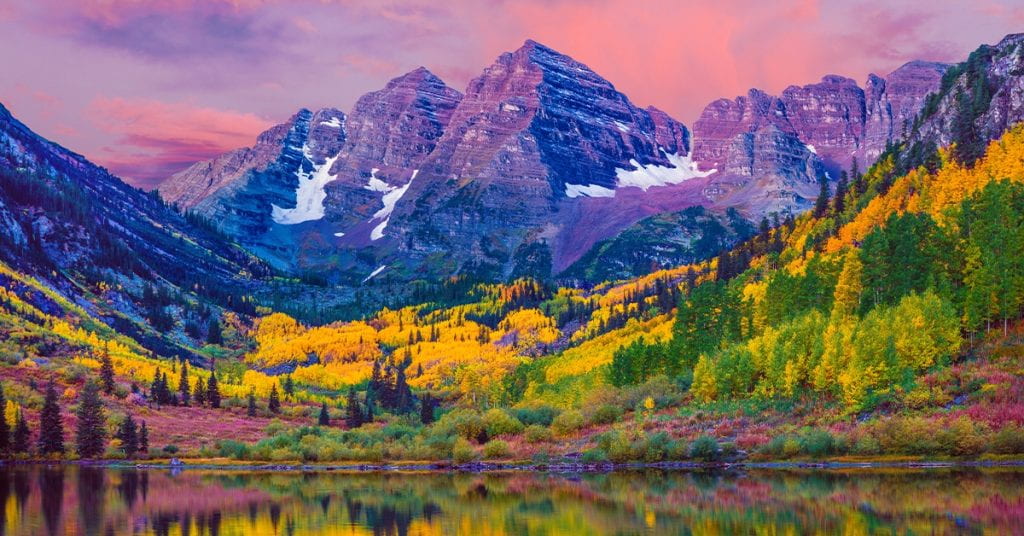Assignments
NEW WORK FOR 5/3 – PHOTOGRAPHY OF HOLA MOHALLA FESTIVAL CELEBRATIONS
- LOK
- Munda
- Helping Hand
- Gatka
- Nishan Sahib
- Generational
IMAGE TRANSFER ASSIGNMENT
- FINAL PRODUCT
- SLIDE 1
- SLIDE 2
ACTIVISM ART ASSIGNMENT + PROCESS PORTFOLIO
- SKETCH
- FINAL DRAWING
- SLIDE 1
- SLIDE 2
ALBUM COVER FOR DIGITAL AUDIO PRODUCTION STUDENT
2 NEW IMAGES 3/4
SCAVENGER HUNT IMAGES
- PATTERN
- FLAG
- HYDRATION
- ART SUPPLIES
- BLACK SNEAKERS
- CIRCULAR OBJECT
- PERSON LAUGHING
- SOMETHING PURPLE
- SHADOW
- MUSICAL INSTRUMENT
- NATURE
- ARCHITECTURE
- SOMETHING IN MOTION
- PLANT
- PINK
2 NEW IMAGES 2/23
8×10 SIGN FOR EXHIBITION
NEW WORK FEB. 9
NEW WORK JAN. 26
NEW WORK: 2 IMAGES
IMAGES THAT INSPIRE ME FOR MY PERSONAL WORK
Image 1
Why It Inspires Me: Studer’s work in India inspires me through the depiction from the kaleidoscope of daily life, capturing the vibrant colors, diverse people, and rich cultural tapestry. It fosters a connection to the human experience in bustling streets, marketplaces, and just simple people doing simple, human actions.
Photographer: Andrew Studer
Site Link: https://andrewstuder.com/street-photography-in-india/
How Photographer May Have Gotten Results: Studer employs a mix of wide-angle shots and close-ups, using the play of light and shadow to accentuate the lively atmosphere. Candid moments and spontaneous compositions contribute to the authenticity of his street photography.
Image 2
Why It Inspires Me: Richards’ work creates inspiration for me as the work stems from the personal narratives of war, aiming to humanize the conflict, something I am interested in as it gives me a better outlook on life and mankind. Moreover, his work elicits empathy by showcasing the emotional toll on individuals affected by war, creating a powerful connection with viewers.
Photographer: Eugene Richards
Site Link: https://eugenerichards.com/war-is-personal/t9tglanrbcbjd9kw4c5par1rhcyrdf
How Photographer May Have Gotten Results: Richards likely utilizes a photojournalistic approach, capturing unguarded moments and emotions. The use of black and white photography enhances the raw and timeless quality of his images, emphasizing the gravity of the subject matter.
Image 3
Why It Inspires Me: Hugo’s “Permanent Error” and this piece inspires me as it depicts the environmental impact of electronic waste in Ghana. The work aims to raise awareness about the consequences of technological progress on the local environment and people and this impact and documentational style of photographer really catches my eye and makes me inspired to also take photos like his.
Photographer: Pieter Hugo
Site Link: https://pieterhugo.com/PERMANENT-ERROR
How Photographer May Have Gotten Results: Hugo employs environmental portraiture, framing his subjects within the context of the e-waste landscape. The use of color photography with muted tones creates a surreal and haunting atmosphere, emphasizing the ecological challenges faced by the community.
Image 4
Why It Inspires Me: Dailleux’s black and white photo of a poor-looking boy in Cairo with camels inspires me as it reflects the harsh realities of life in this place. It conveys a sense of resilience and survival amid challenging circumstances, a topic that I have picked up through some music I listen to and some photography I aim to replicate.
Photographer: Denis Dailleux
Site Link: https://www.denisdailleux.com/index.php?/albums/egypt-cairo/
How Photographer May Have Gotten Results: Dailleux’s use of black and white photography adds a timeless and documentary quality to the image. The composition likely focuses on capturing the essence of the scene, emphasizing the poverty, and the presence of camels adds a cultural layer to the narrative.
Image 5
Why It Inspires Me: Evans’ piece inspires me as I find beauty in the simplicity of everyday moments. The photo captures a sense of camaraderie and humanity in a seemingly mundane act of men sitting on a sidewalk, eating. This type of simplistic, humane action is something I almost adore and wish for to be around our everyday lives, where it seems everyone is just in it for themselves and this level of camaraderie isn’t as present.
Photographer: Walker Evans
Site Link: https://www.moma.org/collection/works/50658?artist_id=1777&page=1&sov_referrer=artist
How Photographer May Have Gotten Results: Evans’ use of documentary-style photography involves straightforward composition and framing. Natural light and the candid nature of the scene contribute to the authenticity of the image, highlighting the dignity in ordinary life during the Great Depression.
SCREENPRRINT FINALIZED
SCREENPRINTING RESEARCH
Screenprinting Process
- Design Creation: Create a design that will be transferred onto the printing screen.
- Screen Preparation: Coat a mesh screen with a light-sensitive emulsion and let it dry.
- Image Exposure: Place the design on the coated screen and expose it to light, hardening the emulsion except where the design blocks the light.
- Washing the Screen: Rinse the screen to wash away the emulsion not exposed to light, revealing the stencil.
- Ink Preparation: Prepare the ink by mixing it to the desired color and consistency.
- Printing Setup: Set up the screen on the printing press, ensuring accurate placement.
- Printing: Lay the screen onto the printing surface and push the ink through the screen using a squeegee.
- Curing: Dry and cure the printed material, often through heat or air drying.
Notable Artists
1. Sister Corita Kent: A nun, artist, and educator, Kent’s vibrant and socially conscious screenprints gained recognition.
2. Shepard Fairey: Known for his “Obey Giant” campaign and the iconic “Hope” poster for Barack Obama’s presidential campaign, Fairey often utilizes screenprinting in his art.
3. Bridget Riley: An influential Op Art artist, Riley’s mesmerizing patterns and optical illusions are often created through screenprinting.
3 Designs I May Do
PERSONAL PROJECT
Images
- Control
- Kindness?
- Righteousness > Selfishess
- Soul
- Search
Personal Project Process Portfolio
BLOCK PRINTING ASSIGNMENT
- Carved Linoleum Block
- Block Print on Wood
BODY,SHAPE,FORM ASSIGNMENT
IMAGE: GRACEFUL HAND
PROCESS PORTFOLIO
LIGHTROOM GALLERY ASSIGNMENT
CUT & PASTE COLLAGE
FINAL PRODUCT
ARTIST STATEMENT, THEME, AND MESSAGE
In a world teeming with conformity, my cut and paste collage project delves into the profound theme of individualism. As a human being, I have always been fascinated by the idea that each person is a unique tapestry of experiences, dreams, and aspirations. It is this intricate interplay of individuality that serves as the heartbeat of my work.
My collage project strives to illuminate the power and significance of embracing one’s individuality. Through a dynamic fusion of images, I aim to visually articulate the idea that each of us possesses the capacity to be a force of change, a harbinger of our destinies. Every snip of a magazine, every layer of paper, every carefully chosen word is a testament to the myriad ways in which we can assert our uniqueness.
The title of my work, “Conquer or Die!”, serves as both a declaration and an invitation. It encapsulates the essence of my message – the notion that to attain our aspirations, we must confront and overcome the obstacles that life presents. In the pursuit of our dreams, we are confronted with challenges, doubts, and fears. “Conquer or Die!” suggests that we have a choice: to conquer these challenges, or to be subsumed by them. It is a call to action, a reminder that true fulfillment is found in pushing beyond our comfort zones, learning about ourselves, and ultimately finding inner peace.
In a world that often imposes conformity, “Conquer or Die!” challenges us to become the architects of our own destinies. It beckons us to embrace our uniqueness, to rise above adversity, and to boldly chase after our dreams. Through the art of collage, I invite viewers to ponder their own paths and to reflect on the power of individualism in the pursuit of personal triumph.
IMAGE RECREATION
INSPIRATION
RECREATION
PROCESS PORTFOLIO
CYANOTYPE
- First Cyanotype. 5-6 Minutes in Sun.
- Second/Final Cyanotype. 10-12 Minutes in Sun.
ARTISTS TO RESEARCH FOR COMPARATIVE STUDY
-
Ansel Adams
– Medium: Black and white photography, primarily landscapes.
– Style: Known for his meticulous use of light and contrast to capture the grandeur of natural landscapes.
– Opinion: Ansel Adams’ work is iconic and has had a profound influence on landscape photography. His dedication to technique and the sheer beauty of his compositions make him a timeless figure in the medium.
-
Cindy Sherman
– Medium: Photography, mostly self-portraiture.
– Style: Sherman is famous for her conceptual self-portraits where she transforms herself into various characters, often commenting on identity and gender.
– Opinion: Cindy Sherman’s work is thought-provoking and challenges conventional notions of identity. Her ability to become different personas through photography is both fascinating and unsettling.
-
Diane Arbus
– Medium: Photography, portraits of marginalized individuals.
– Style: Arbus is known for her candid and empathetic portraits, often of people on the fringes of society.
– Opinion: Diane Arbus’ work is a powerful exploration of human diversity and vulnerability. Her portraits offer a glimpse into lives that are often overlooked.
-
Man Ray
– Medium: Photography, Surrealist and Dadaist.
– Style: Man Ray experimented with avant-garde techniques, including photograms (rayographs) and solarization, to create surreal and abstract images.
– Opinion: Man Ray’s innovative approach to photography blurs the line between reality and imagination, making his work intriguing and influential in the world of art.
-
Dorothea Lange
– Medium: Documentary photography, capturing the Great Depression era.
– Style: Lange’s photographs are known for their raw and emotional portrayal of human suffering during challenging times.
– Opinion: Dorothea Lange’s work is a testament to the power of photography to document social issues. Her images continue to be poignant reminders of historical struggles.
-
Joel-Peter Witkin
– Medium: Photography, often controversial and macabre.
– Style: Witkin’s work explores themes of death, deformity, and the grotesque, challenging societal norms.
– Opinion: Joel-Peter Witkin’s work is not for the faint of heart. It pushes boundaries and confronts taboos, sparking important discussions about art and its limits.
-
Hiroshi Sugimoto
– Medium: Photography, long-exposure landscapes and architecture.
– Style: Sugimoto’s minimalist approach often captures the essence of his subjects through long-exposure techniques.
– Opinion: Hiroshi Sugimoto’s work is serene and contemplative. His mastery of long-exposure photography creates timeless, almost ethereal images.
-
Catherine Opie
– Medium: Photography, portraits and landscapes.
– Style: Opie’s work combines elements of portraiture and landscape photography to explore identity and place.
– Opinion: Catherine Opie’s ability to capture the essence of her subjects and the environments they inhabit is both visually engaging and thought-provoking.
-
Irving Penn
– Medium: Fashion and portrait photography.
– Style: Penn’s meticulous approach to lighting and composition made him a legendary figure in fashion photography.
– Opinion: Irving Penn’s work in fashion photography is iconic. His ability to merge artistry with commercial work is commendable.
-
Nan Goldin
– Medium: Photography, candid and intimate snapshots.
– Style: Goldin’s work is deeply personal, documenting her own life and the lives of her friends within the LGBTQ+ community.
– Opinion: Nan Goldin’s work is a raw and honest portrayal of human relationships and struggles. Her photographs are intimate and emotive.
SURREALISM
Surrealist Inspiration: Christopher Nolan & ‘Inception’
“Inception,” directed by Christopher Nolan, is a mind-bending cinematic experience that takes viewers on a trippy journey through the intricacies of dreams within dreams and it is what heavily inspired me to try and do my own take on it for this Surrealism Assignment. The film’s surreal and disorienting narrative structure mirrors the labyrinthine nature of the subconscious mind. As the characters delve deeper into the layers of dreams, reality becomes increasingly elusive, blurring the lines between what is real and what is a dream. This trippiness can be interpreted as a reflection of the fragility of our perceptions and the malleability of reality. Inception challenges us to question the very nature of our thoughts, memories, and desires, leaving us with a lingering sense of awe and introspection long after the credits roll. It’s a testament to the power of cinema to transport us to uncharted territories of the imagination and leave us pondering the mysteries of the human psyche.
Image Inspiration/Photos From the Movie
PERSONAL SURREALISM WORK
PROCESS PORTFOLIO FOR SURREALISM ASSIGNMENT
PHOTOGRAPH ELEMENTS OF ART AND COMPOSITION
PERSONAL IMAGES
- BALANCE
- COLOR
- FORM
- SHAPE
- FRAMING
- LINE
- VALUE
- SPACE
- LEADING LINE
- VALUE
- TEXTURE
- SPACE
INSPIRATION
- BALANCE – ELEMENTS OF ART INSPIRATION
- BALANCE – ELEMENTS OF ART INSPIRATION
- FRAMING – ELEMENTS OF ART INSPIRATION
- LINE – ELEMENTS OF ART INSPIRATION
- SHAPE – ELEMENTS OF ART INSPIRATION
- SPACE – ELEMENTS OF ART INSPIRATION
- TEXTURE – ELEMENTS OF ART INSPIRATION
- VALUE – ELEMENTS OF ART INSPIRATION
- VALUE – ELEMENTS OF ART INSPIRATION
- LEADING LINE – ELEMENTS OF ART INSPIRATION
- FORM – ELEMENTS OF ART INSPIRATION
- COLOR – ELEMENTS OF ART INSPIRATION
Read and Write Review Q&A
What are aperture, shutter speed and ISO?
- Aperture, shutter speed, and ISO are three essential components of photography settings. Aperture controls the size of the lens opening, shutter speed manages how long the camera’s sensor is exposed to light, and ISO adjusts the sensitivity of the sensor to light.
When would you need to change your ISO?
- You would need to change your ISO when the lighting conditions change. Higher ISO values are used in low-light situations to capture more light, but they can introduce noise. Lower ISO values are used in well-lit environments for cleaner images.
What is aperture and shutter priority settings?
- Aperture priority and shutter priority settings are semi-automatic shooting modes. Aperture priority lets you set the aperture while the camera selects the corresponding shutter speed. Shutter priority lets you set the shutter speed while the camera selects the appropriate aperture.
What are AF modes and how do you change them?
- AF modes are Autofocus modes that determine how the camera focuses on the subject. You can change them through your camera’s settings. Common modes include Single-Servo AF (focuses once) and Continuous-Servo AF (tracks moving subjects).
Why do you need to meter the light to get the right exposure?
- Metering the light helps you achieve proper exposure by measuring the brightness of the scene. This allows you to adjust settings like aperture, shutter speed, and ISO to ensure the image isn’t too dark (underexposed) or too bright (overexposed).
What is the difference between a normal, wide angle and telephoto lens?
- Normal, wide-angle, and telephoto lenses refer to different focal lengths. Normal lenses show a scene similar to what the human eye sees. Wide-angle lenses capture a broader view, and telephoto lenses magnify distant subjects. Each has distinct creative uses.
What is white balance and why would you need to change it?
- White balance adjusts the color temperature of your photos to accurately represent colors under different lighting conditions. You might need to change it to prevent color casts caused by different light sources.
What is depth of field and what is the difference between shallow and good?
- Depth of field is the range of distance in a photo that appears sharp. Shallow depth of field (smaller aperture) blurs the background, emphasizing the subject. Good depth of field (larger aperture) keeps more of the scene in focus.
What are drive modes and metering modes?
- Drive modes refer to how the camera captures multiple images in succession, like continuous shooting. Metering modes determine how the camera evaluates light for exposure. Examples include Matrix, Center-weighted, and Spot metering.
What is exposure compensation?
- Exposure compensation allows you to manually adjust the camera’s calculated exposure settings to make an image darker or brighter. This is useful when the camera’s metering system doesn’t produce the desired result.
